#DOCTOR WHO; Television; 1965
Explore tagged Tumblr posts
Audio
(Literary License Podcast)
Mission To The Unknown
9 October 1965
The only standalone regular episode of the show's original run, it serves as an introduction to the 12-part story The Daleks' Master Plan. It is notable for the complete absence of the regular cast and the TARDIS; it is the only serial in the show's history not to feature the Doctor at all, although William Hartnell was still credited on-screen. The story focuses on Space Security Agent Marc Cory (Edward de Souza) and his attempts to warn Earth of the Daleks' plan to take over the Solar System.
The Myth Makers
16 October - 6 November 1965
Based on Homer's Iliad, the First Doctor (William Hartnell) and his travelling companions Vicki (Maureen O'Brien) and Steven (Peter Purves) land in Troy during the Trojan War. The Doctor is captured by the Greeks and forced to formulate a plan for taking the city, while Steven and Vicki are captured by the Trojans and forced to devise a means of banishing the Greeks; the latter duo meet Katarina (Adrienne Hill), who becomes a companion by the serial's end.
Opening Credits; Introduction (.37); Introduction of Mission To The Unknown (6.28); Mission to the Unknown Synopsis (7.21); Story Thoughts (9.24); Let's Rate (21.30); The Myth Makers Plot Synopsis (23.49); Lights, Camera, Action (27.15); How Many Stars (34.05); End Credits (36.17); Closing Credits (37.15)
Opening Credits– Epidemic Sound – Copyright . All rights reserved
Closing Credits: Snoopy’s Christmas vs The Red Baron by The Royal Guardsmen. Taken from the Album Snoopy and His Friends. Copyright 1967 Laurie Records.
Original Music copyrighted 2020 Dan Hughes Music and the Literary License Podcast.
All rights reserved. Used by Kind Permission.
All songs available through Amazon Music.
0 notes
Text

Koquillon from Doctor Who, "The Powerful Enemy" (1965)
51 notes
·
View notes
Text
Obituary
William Russell obituary
Stage and screen actor who was part of the original cast of Doctor Who
Michael Coveney Tue 4 Jun 2024 17.40 BST

William Russell, left, as Ian Chesterton, with William Hartnell as the Doctor, Jacqueline Hill as Barbara and Carole Ann Ford as Susan in the Doctor Who serial The Keys of Marinus, 1964. Photograph: BBC
On 23 November 1963 – the day after the assassination of President John F Kennedy – the actor William Russell, who has died aged 99, appearing in a new BBC television series, approached what looked like an old-fashioned police box in a scrapyard, from which an old chap emerged, saying he was the doctor. Russell responded: “Doctor Who?”
And so was launched one of the most popular TV series of all time, although the viewing figures that night were low because of the political upheaval, so the same episode was shown again a week later. It caught on, big time, with Russell – as the science schoolteacher Ian Chesterton – and William Hartnell as the Doctor establishing themselves alongside Jacqueline Hill as the history teacher Barbara Wright and Carole Ann Ford as Susan Foreman.
Russell stayed until 1965, returning to the show in 2022 in a cameo appearance as Ian and, since then, participating happily in all the hoop-la and fanzine convention-hopping, signing and schmoozing that such a phenomenon engenders.
Before that, though, Russell had achieved prominence in the title role of the ITV series The Adventures of Sir Lancelot (1956-57) – he was strongly built with an air of dashing bravado about him; he had been an RAF officer in the later stages of the second world war – and as the lead in a 1957 BBC television adaptation of Nicholas Nickleby, transmitted live in 18 weekly episodes.
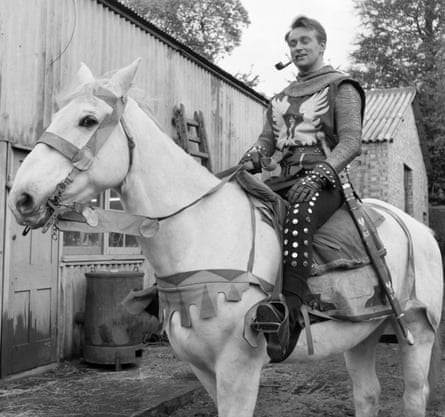
William Russell on the set of the 1950s television series The Adventures of Sir Lancelot. Photograph: Mirrorpix/Getty Images
When Sir Lancelot went to the US, the first British TV import to be shot in colour for an American audience, Russell rode down Fifth Avenue on a horse in full regalia, like some returning, mystical, medieval knight in the heart of Normandy. The show was a smash hit.
By now he was established in movies, playing a servant to John Mills in The Gift Horse (1952) and a clutch of second world war action movies including They Who Dare (1954) opposite Dirk Bogarde, directed by Lewis “All Quiet on the Western Front” Milestone – he met his first wife, the French model and actor Balbina Gutierrez on a boat sailing to Cyprus to a location shoot in Malta – and Ronald Neame’s The Man Who Never Was (1956), the first Operation Mincemeat movie, in which he played Gloria Grahame’s fiance.
Until this point in his career, he was known as Russell Enoch. But Norman Wisdom, with whom he played in the knockabout comedy farce One Good Turn (1955) objected to his surname because he felt (oddly) that it would publicise a vaudevillian rival of his called Enoch. So, somewhat meekly, and to keep Wisdom happy, he became William Russell, although, in the 1980s, for happy and productive periods with the Actors Touring Company and the RSC, he reverted to the name Russell Enoch. Later, he settled again on William Russell. All very confusing for the historians. His doorbell across the road from me in north London bore the legend “Enoch”.
He was born in Sunderland, the only child of Alfred Enoch, a salesman and small business entrepreneur, and his wife, Eva (nee Pile). They moved to Solihull, and then Wolverhampton, where William attended the grammar school before moving on to Fettes college in Edinburgh and Trinity College, Oxford, where his economics tutor was the brilliant Labour parliamentarian Anthony Crosland.
But Russell didn’t “get” the economics part of the PPE (philosophy, politics and economics) course and switched, much to Crosland’s relief, to English. In those years, 1943-46, he worked out his national service and appeared in revues and plays with such talented contemporaries as Kenneth Tynan, Tony Richardson and Sandy Wilson.
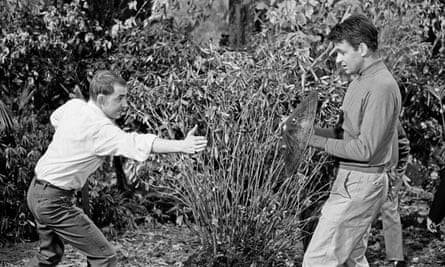
Derek Ware, a fight co-ordinator, runs through a scene with Russell during a break in filming the Doctor Who story The Crusades at the BBC studios, Ealing, in 1965. Photograph: Mirrorpix/Getty Images
On graduating, he played in weekly rep in Tunbridge Wells, fortnightly rep at the Oxford Playhouse and featured, modestly, in the Alec Guinness Hamlet of 1951 at the New (now the Noël Coward) theatre. He had big roles in seasons at the Bristol Old Vic and the Oxford Playhouse in the early 60s, while on television he was in JB Priestley’s An Inspector Calls with John Gregson, and was St John Rivers in Jane Eyre.
He played Shylock and Ford (in the Merry Wives of Windsor) in 1968-69 at the Open Air, Regent’s Park, before joining the RSC in 1970 as the Provost in Measure for Measure (with Ian Richardson and Ben Kingsley), Lord Rivers in Norman Rodway’s Richard III and Salisbury in a touring King John, with the title role played by Patrick Stewart.
His billing slipped in movies, but he played small parts in good films such as Superman (1978), starring Christopher Reeve, as one of the Elders; as a passerby drawn into the violence in the Spanish-American slasher film Deadly Manor (1990); and in Bertrand Tavernier’s Death Watch (1980), a sci-fi futuristic fable about celebrity, reality TV and corruption, starring Romy Schneider and Harvey Keitel.
With John Retallack’s Actors Touring Company in the 80s, he was a lurching, apoplectic Sir John Brute in John Vanbrugh’s The Provok’d Wife, possessing, said Jonathan Keates in the Guardian, “a weirdly philosophical elegance”; a civilised Alonso, expertly discharging some of the best speeches in The Tempest; and a quick-change virtuosic king, peasant, soldier and tsar in Alfred Jarry’s 1896 surrealist satire Ubu Roi in the Cyril Connolly translation.
Back at the RSC in 1989, he was the courtly official Egeus in white spats (Helena wore Doc Martens) in an outstanding production of A Midsummer Night’s Dream by John Caird, and both the Ghost and First Player in Mark Rylance’s pyjama-clad Hamlet directed by Ron Daniels. In 1994 he took over (from Peter Cellier) as Pinchard in Peter Hall’s delightful production of Feydeau’s Le Dindon, retitled in translation An Absolute Turkey, which it wasn’t.
He rejoined Rylance in that actor/director’s opening season in 1997 at the new Shakespeare’s Globe. He was King Charles VI of France in Henry V and Tutor to Tim in Thomas Middleton’s riotous Jacobean city comedy, A Chaste Maid in Cheapside. Many years later, in 2021, his son Alfred Enoch (Dean Thomas in the Harry Potter movies), would play on the same stage as a fired-up Romeo.
Russell is survived by his second wife, Etheline (nee Lewis), a doctor, whom he married in 1984, and their son, Alfred, and by his children, Vanessa, Laetitia and Robert, from his marriage to Balbina, which ended in divorce, and four grandchildren, James, Elise, Amy and Ayo.
William Russell Enoch, actor, born 19 November 1924; died 3 June 2024.
-- I'm a bit annoyed there's no mention of the fact that William continued to play Ian Chesterton for Big Finish.
96 notes
·
View notes
Text
Magneto: A Biographical Timeline, 1963-1991

Magneto just might be one of the most iconic comic book antagonists of all time. He was created in 1963 by Stan Lee and started out as the X-Men’s deadliest foe. Not much is revealed about Magneto through the 60’s but when author Chris Claremont takes over writing the X-Men starting in 1975 he began to develop the character and give him a complex backstory. Magneto quickly started his journey to being a hero and by the 80’s he was no longer a foe of the X-Men, but an ally, and eventually the leader of the Xavier Institute. After corporate meddling forced Magneto back into an antagonistic role in the 90’s, Magneto was eventually killed off and Claremont was fired. This was the end of a cohesive story and trajectory for the character.
Magneto’s backstory has become murky in the years since. The wiki pages (both fan wikis and wikipedia) often take the angle of attempting to synthesize everything ever said about the character into one cohesive story. That, of course, isn’t very helpful when there’s been sixty years of contradictory information and continual reboots – both hard and soft – of the character, his relationships and his backstory. Even his name has come to be muddled with every few years someone deciding to give him a new one. Below, I’ve compiled a list of all the relevant biographical details as they appeared in print from 1963 – 1991. This is a comprehensive overview of the character during his most iconic storylines, many of which have gone on to be adapted to both television and film.
I have included links to relevant historical information at various points as well as to an excellent 2018 documentary, available on YouTube so be sure to check that out as well.
1963
September
X-Men #1 published
1964
March
Uncanny X-Men (1963) #4 “The Brotherhood of Evil Mutants” by Stan Lee
Wanda and Pietro are introduced with the Brotherhood of Evil Mutants. They are introduced as brother and sister, no last names are given.
Wanda owes Magneto a life debt because he prevented villagers in the heart of Europe from burning Wanda as a witch. Wanda and Pietro aren’t happy about being in the Brotherhood.
Magneto is described as tall.
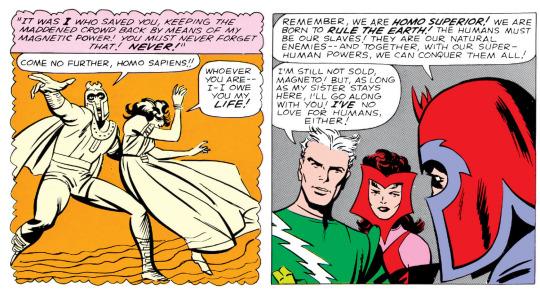
1965
May
Avengers (1963) #16 “The Old Order Changeth!” by Stan Lee
Wanda and Pietro join the Avengers.
Wanda mentions that Pietro is older than her.
Wanda is described as “black-haired” (though in many later appearances she is most often drawn with brown or red hair)
1968
November
Uncanny X-Men (1963) #50 “Hail, Queen of Mutants” by Arnold Drake
Mesmero claims that Polaris (Lorna Dane) is Magneto’s daughter and attempts to brainwash her to join Magneto.
1969
January
Uncanny X-Men (1963) #52 “Twilight of the Mutants” by Arnold Drake
Iceman (Bobby Drake) reveals to Polaris that Magneto is not her father and is “conning” her.
July
Uncanny X-Men (1963) #58 “Mission Murder” by Roy Thomas
The Magneto who appeared in issues #49-52 is revealed to have been a robot all along and Magneto is unconnected to the plot of the robot Magneto.
December 1970 – June 1975
No new books are written for X-Men and the title exists solely as reprints of earlier issues. In effect, the book is dead.
1974
October
Defenders (1972) #16 “Alpha, the Ultimate Mutant” by Len Wein
Magneto is turned into a baby by the mutant Alpha.
1975
August
Chris Claremont begins writing for the Uncanny X-Men starting with issue #94.
1977
April
Uncanny X-Men (1963) #104 “The Gentleman’s Name is Magneto” by Chris Claremont
Magneto is returned to adulthood by Eric the Red.
November
The Champions (1975) #16 “A World Lost!” by Bill Mantlo
Magneto works with Beast (Hank McCoy) to free the former X-Men team from Doctor Doom’s mind control. (I believe this marks the beginning of Magneto’s turn to being a hero)
1978
May
Marvel Team-Up (1972) #69 Featuring Spider-Man and Havok “Night of the Living God” by Chris Claremont
Polaris reiterates that she is not Magneto’s daughter.
August
Uncanny X-Men (1963) #112 “Magneto Triumphant” by Chris Claremont
Magneto reiterates that he never worked with Mesmero and the being who claimed to be Polaris’ father was a robot.
September
Uncanny X-Men (1963) #113 “Showdown!” by Chris Claremont and John Byrne
Magneto’s Antarctic base is destroyed and with it the “work and memories of a lifetime.”
Magneto is sad to have the X-Men destroy everything but steels himself with the thought “I am alive.”
1979
August
Avengers (1963) #186 “Nights of Wundagore!” by Steven Grant, Mark Gruenwald and David Michelinie
Wanda and Pietro return to Transia looking for information about their past.
Transia is a German-speaking nation.
Their mother is revealed to be Magda, no last name is given for her.
Magda left her husband because she feared his powers and desire to rule the world. (This story will change somewhat as the idea is developed)
Magda ran away from Transia after giving birth.
The narrative implies she went into the wilderness to die.
Wanda and Pietro were then given to Django Maximoff and his wife to raise.
September
Uncanny X-Men (1963) #125 “There’s Something Awful on Muir Island” by Chris Claremont
Magneto runs across an image of Magda on a memory tape and reminisces about his late wife thinking “Magda… my late wife. I’d almost forgotten how beautiful you were… How deeply it hurt when you ran away from me.”
This reveals him to the reader as the father of Wanda and Pietro.
1980
October
Uncanny X-Men (1963) #138 “Elegy” by Chris Claremont and John Byrne
Polaris is once again mentioned as not being the daughter of Magneto.
1981
January
Uncanny X-Men (1963) #141 “Days of Future Past” by Chris Claremont and John Byrne
In a far distant possible future Magneto is revealed to be working with the X-Men after mutants face genocide and persecution.
Magneto’s name is revealed to be Magnus for the first time, no last name is given.
August
Uncanny X-Men (1963) #148 “Cry, Mutant!” by Chris Claremont
Magneto meets Cyclops’ (Scott Summers) girlfriend, Aleytys “Lee” Forrester, for the first time on his island base in the Bermuda Triangle.
September
Uncanny X-Men (1963) #149 “And the Dead Shall Bury the Living” by Chris Claremont
Charles Xavier reveals that Magneto is “Caucasian, probably Nordic.”
Charles reflects that Magneto was “the first ‘evil’ mutant the X-Men fought.” (The use of quotes around the word evil is intentional to suggest that Magneto is not really evil)
Charles thinks that “Magneto and I are uncomfortably alike.”
October
Uncanny X-Men (1963) #150 “I, Magneto” by Chris Claremont
Magneto learns of Jean Grey’s death and says that he grieves for her. He states “I know… something of grief. Search throughout my homeland, you will find none who bear my name. Mine was a large family, and it was slaughtered.”
Magneto speaks to the crew of the Soviet submarine Leningrad in Russian.
Magneto keeps his computer programming book written in a language neither Kitty nor Storm (Ororo Munroe) can read.
Later, after a fateful confrontation with the X-Men, Magneto thinks he’s killed Kitty Pryde. He is gripped with remorse saying “What have I done?!” and “Why did you not understand? Magda – my beloved wife – did not understand. When she saw me use my powers, she ran from me in terror. It did not matter that I was defending her… that I was avenging our murdered daughter. I swore then that I would not rest ‘til I had created a world where my kind – mutants – could live free and safe and unafraid. Where such as you, little one could be happy. Instead I have slain you. I remember my own childhood – the gas chambers as Auschwitz, the guards joking as they herded my family to their death. As our lives were nothing to them, so human lives became nothing to me.” (This is the first time Anya is mentioned even if she is not yet named, as well as the first time that Magneto is mentioned to be a Holocaust and Auschwitz survivor.)
Storm tells Magneto to pray to his deity as she intends to kill him for hurting Kitty. Magneto replies “As a boy, I believed. As a boy, I turned my back on God forever.”
When Storm suggests that his good dreams have been corrupted, Magneto insists that he is too old to change and has lived with his hatred too long.
Afterward, Charles offers that Magneto “Will emerge from this crucible the good man he once was and may yet be again.”

1982
September
Uncanny X-Men (1963) #161 “Gold Rush” by Chris Claremont
The narrative tells us the following took place twenty years ago placing these events around 1962.
Charles recalls meeting Magneto long ago in Israel when he went there to help treat Holocaust survivors.
Magneto is a volunteer at the hospital where Charles is working.
Magneto is introduced as Magnus, no last name is given.
Magneto reveals that he grew up in Auschwitz and states that “I have no family, Dr. Xavier. Anymore.”
The Auschwitz prisoner number tattooed on Magneto’s arm is revealed to be 214782.
The doctor Charles is working with says most of the volunteers were concentration camp survivors who “bring a degree of empathy to their work that the rest of us can’t match.”
Charles and Magneto grow close during their time together despite different views on the future of humans and mutants.
They also become close with Charles’ patient, Gaby Haller who is suffering severe psychic trauma from her experiences during the Holocaust.
Charles eventually comes to realize that “in many ways, Magnus has been as deeply scarred by his experiences as Gaby.”
Charles and Gaby start dating.
Eventually Charles and Magneto reveal to each other that they are mutants.
Charles and Magneto go to Kenya to rescue Gaby, who has been kidnapped by Hydra.
Magneto tells the Hydra leader, Baron Strucker, “You will find me considerably harder to slay than your countrymen did my family at Auschwitz.” and “Unfortunately, my power did not manifest itself ‘til I reached adulthood. By then the war was over. But had I possessed it in the camps, butcher, the tyranny of your Third Reich would have been ended overnight!”
They rescue Gaby and part ways still ultimately disagreeing about means and ends because of the violent methods Magneto used against Hydra.
Magneto flies off with an enormous stash of Nazi gold plundered from Hydra.
Until he disguises himself as Hydra, Magneto only wears white throughout the issue.
December
Marvel Graphic Novel #5 “X-Men: God Loves, Man Kills” by Chris Claremont
(This story is a stand-alone story, it doesn’t really get mentioned in the regular Uncanny X-Men timeline or referenced anywhere else, unlike the Dazzler graphic novel published in the same line. That does not necessarily mean it is out of continuity, just that it doesn’t ever get called back to during Claremont’s further writing.)
Magneto joins forces with the X-Men to save Charles from Reverend Stryker and prevent his anti-mutant genocide. He tells Cyclops “I am not your enemy, X-Men, nor do I consider you mine.”
Cyclops presses Magneto about his plan to become world dictator and Magneto replies “I have lived under a dictatorship… and seen my family butchered by its servants. When I rule, it will be for the betterment of all.” Cyclops asks who takes over after Magneto dies, Magneto responds “You, of course, Cyclops. And the X-Men. Why do you think I want you by my side?”
Charles refers to Magneto as Magnus.
Magneto asks Charles to join him and his cause after they defeat Stryker, and though tempted, Charles ultimately refuses holding on to his dream of human/mutant integration.
Magneto parts ways with the X-Men despite them asking him to stay.
1983
February
Vision and the Scarlet Witch (1982) #4 “Please Allow Me to Introduce Myself…!” by Bill Mantlo
Magneto discovers what happened to Magda after she left him and finds out that he is Wanda and Pietro’s father.
Magda’s fate is more vague in this telling, saying only that she “fled into the night” without the implication that Magda wanted to die.
Magneto reveals this information to Wanda and Pietro. He meets Pietro’s daughter, his granddaughter, Luna.
Magneto asks Pietro and Wanda to accept him into their lives.
1984
May
Marvel Super Heroes Secret Wars (1984) #1 “The War Begins” by Jim Shooter
(Though the Secret Wars story line continues to be published after this date, the event ends and the regular in-universe timeline resumes with Uncanny X-Men #181 published in May 1984.)
When the Beyonder transports heroes and villains to a far away planet to fight each other, Magneto is placed among the heroes.
The other non-mutant heroes are leery of Magneto so Magneto decides to leave and solve their predicament by himself.
July
Marvel Super Heroes Secret Wars (1984) #3 “Tempest Without, Crisis Within!” by Jim Shooter
Magneto captures Wasp (Janet Van Dyne) and brings her to his headquarters in hopes of convincing her to join forces with him
Wasp, addresses Magneto as Magnus.
Magneto and Wasp have sex.

August
Marvel Super Heroes Secret Wars (1984) #4 “Situation: Hopeless” by Jim Shooter
The X-Men leave the other heroes and join Magneto to try and end the situation they were brought into.
November
The New Mutants (1983) #21 “Slumber Party!” by Chris Claremont
When Warlock falls from space he crashes into Asteroid M. Magneto attempts to create a force field to protect Asteroid M but is unable to do so. Asteroid M is destroyed and Magneto is apparently knocked to Earth from space.
December
Uncanny X-Men (1963) #188 “Legacy of the Lost” by Chris Claremont
Lee Forrester finds Magneto injured and floating in the water near the center of the Bermuda Triangle. She fights off a shark and brings him aboard her boat.
1985
January
New Mutants (1983) #23 “Shadowman” by Chris Claremont
Magneto insists on leaving the hospital and going back to his island base in the Bermuda Triangle.
Lee and Magneto journey there alone on Lee’s boat.
Magneto is seasick the entire way there.
On the island Lee challenges Magneto on his anti-human stances.
February
New Mutants (1983) #24 “Hollow Heart” by Chris Claremont
Magneto apologizes to Lee for being rude to her and compliments her appearance.
Lee begins to see Magneto in a new light.
Marvel Super Heroes Secret Wars (1984) #10 “Death to the Beyonder!” by Jim Shooter
Magneto is tempted to join forces with Doctor Doom, who the narrative implies is using some sort of power to sway Magneto to his side. Magneto “Reaches out to grasp Doom’s spectral hand – but then, he hesitates. His eyes find Xavier’s, and for an endless split-second, he trembles on the brink…”
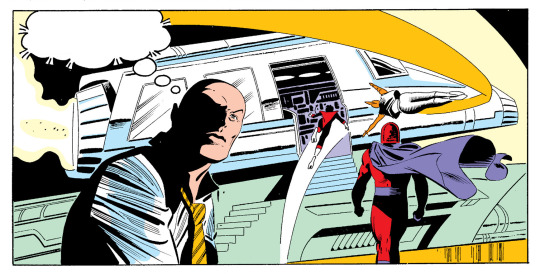
April
New Mutants (1983) #26 “Legion” by Chris Claremont
Lee is awakened by Magneto having a bad dream, he is making noise and screaming.
Magneto is using his powers in his sleep and speaking in a language Lee doesn’t know.
She wakes Magneto before he causes himself harm and he is grateful to her for saving his life.
Magneto tells Lee that he was dreaming of “a time and place I thought forever… buried.” Lee says she’s never heard such desolation in his voice. Magneto replies “Death. Resurrection. I’d have died tonight, I think, if not for you. Twice now, I owe you my life.”
Magneto and Lee have sex.
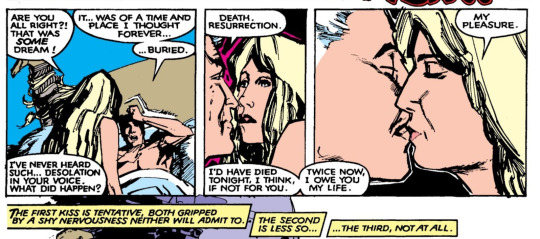
Marvel Super Heroes Secret Wars (1984) #12 “...Nothing to Fear...” by Jim Shooter
It is reveled that the Beyonder placed Magneto in the hero team because “His desires seemed like theirs.”
June
New Mutants (1983) #28 “Soulwar” by Chris Claremont
Lee has second thoughts about Magneto the morning after.
Magneto brings her breakfast the next morning, complete with a rose.
Magneto uses his powers to prevent Lee from leaving their conversation and this frightens her.
Magneto pleads with her to give him a chance. He tells Lee how Magda left him after learning he was a mutant. “My wife, Magda, had such a look on her face – I had saved us both from a marauding patrol of secret police, yet all she saw was that I had used super-powers to do it. In that moment, I became different – our love meant nothing. I was no longer human. I was a mutant, a thing. She ran from me, in terror. I never saw her again. Never knew – until much later, far too late – that she had borne my children. Don’t – please Lee, don’t you run from me, too. I cannot bear to be alone and I am sick at heart at the realization of what I have become. Help me, Lee, I… beg you. I need you.” (In this telling there is no mention of Anya, only a reference to the twins – Wanda and Pietro)
Lee refuses Magneto leaving him brokenhearted.
July
New Mutants (1983) #29 “Meanwhile, Back at the Mansion” by Chris Claremont
Lee has time to reflect and realizes she does have feelings for Magneto. She confesses her feelings for him and they reconcile.
Magneto apologizes for using his powers in a high-handed way and promises to do better.
Charles asks Magneto to lead the X-Men and the New Mutants against the Beyonder.
Secret Wars II (1985) #1 “Earthfall!” by Jim Shooter
Magneto rallies the X-Men and the New Mutants to fight the Beyonder, and as the Blackbird is out of service, Magneto uses his powers to fly the Xavier institute limousine from New York to California.
August
Uncanny X-Men (1963) #196 “What was That?!!” by Chris Claremont
Magneto is brought into the X-Men fold.
Magneto dissuades Rachel Summers from killing an anti-mutant extremest demonstrating his full acceptance of doing things the Xavier way.
Magneto states that “My children have disowned me.” Referring to Wanda and Pietro.
Magneto draws a parallel between himself and Rachel Summers saying that he “Like Rachel… has dwelled too long in the valley of the shadow of death. In too many tragic ways, we are kindred souls – survivors of the holocaust, children of the abyss.”
Kitty remarks that Magneto has the makings of a hero and Magneto replies “No. I am no hero, merely a man… who has seen and done and endured what can never be forgotten… or forgiven.”
November
Uncanny X-Men (1963) #199 “The Spiral Path” by Chris Claremont
Magneto and Kitty attend a reception at the National Holocaust Center in Washington, D.C.
Kitty asks those in attendance if they have any news of her great-aunt Chava who lived in Warsaw before the war.
Magneto reveals that he knew Kitty’s aunt at Auschwitz. He also runs into some friends, other survivors who were at Auschwitz with him. They remark that Magneto helped to save them, and many others. (One could read this conversation as implying Magneto was Polish by nationality)
Magneto’s friends state that he had been in Auschwitz “from the very start.”
Neither of his friends use his name during the conversation.
Mystique and the Freedom Force arrest Magneto for the US Government. Magneto surrenders himself into their custody.
December
Uncanny X-Men (1963) #200 “The Trial of Magneto” by Chris Claremont
Magneto is put on trial before the World Court.
Gaby Haller acts as his defense attorney.
She argues that Magneto should only be judged for actions undertaken after his rebirth from infancy.
She reveals that Magneto was an inmate in Auschwitz “as an adolescent.”
Magneto is revealed to be, biologically, only in his early thirties.
The proceedings are interrupted by an attack. Charles and Magneto end up away from the court.
Charles entrusts the running of his institute and the keeping of his dream to Magneto telling him not to return to court to be martyred. Charles is then beamed aboard a spaceship for urgent medical care.
1986
January
New Mutants (1983) #35 “The Times, They Are A’changin’!” by Chris Claremont
Magneto takes up his post as the headmaster of the Xavier Institute. Magneto tells the New Mutants he is doing this to “honor that friendship” he has with Charles.
The New Mutants are skeptical of Magneto, but Magneto asks them to give him a chance. He says that both he and Charles view this as a way of “putting things right” after all the evil he has done in his life.
Magneto has doubts about his ability to run the institute.
Magneto wishes Lee were with him, but she’s running her ship. Magneto misses her which surprises him because Magneto “thought I was beyond such caring.”
Lee wrote Magneto a letter telling him that she loved him and calling him darling.
Mirage (Dani Moonstar) is attacked on her way home from town and once Mirage is safe, Magneto finds the attackers. He destroys their house and threatens “Once, with far less cause, I would quite cheerfully have slain you – rent your bodies limb from limb as easily as I did your house. Indeed, I am sorely tempted. The world would not miss such as you. But I am older, a littler sadder – and I hope, wiser. I have learned a better way.” and “Mine is the power to destroy – but I choose not to. Profit from my example. The evil you do others returns unto you a thousandfold – it scars both body and, far worse, soul. Continue down this cruel and bloody road you’ve chosen and one day, you’re certain to meet one not as forgiving as I. Is that what you want? The choice, as ever, remains your own.”
Mirage’s attackers turn themselves into the police.
February
Uncanny X-Men (1963) #202 “X-Men, I’ve Gone to Kill the Beyonder!” by Chris Claremont
Magneto uses Cerebro.
March
Vision and the Scarlet Witch (1985) #6 “No Strings Attached!” by Steve Englehart
Wanda invites Magneto to her thanksgiving dinner but ultimately tells him that he will have to prove himself before she’ll accept him into her life.
Magneto takes responsibility for being a bad father. (the author doesn’t write consistently on if Magneto knew he was the twins’ father or not, he also doesn’t seem to care if Pietro has any hard feelings about Magneto, Wanda is the only one who counts. Also, he has Magneto call pregnant Wanda hysterical for no reason, just fyi.)
April
New Mutants (1983) #38 “Aftermath!” by Chris Claremont
The New Mutants are collectively dealing with psychic shock after their meeting with the Beyonder. This includes nightly collective nightmares for the students and Magneto.
Magneto has doubts about his ability to help the students recover.
Emma Frost offers that Magneto should send the children to her Massachusetts Academy where she can use her powers to help them.
Magneto meets the Salem Center High principal Analie Hogarth. Magneto reveals that he is posing as Charles’ “mysterious older cousin” and going under the alias Michael Xavier, an identity Charles created for him.
One of Emma’s students, a Hellion named Empath (Manuel de la Rocha) is revealed to the reader as having manipulated Magneto to feel lost and confused.
Magneto tries throughout the issue to help the New Mutants, but nothing works. He finally agrees to Emma’s offer.
May
New Mutants (1983) #39 “Pawns of the White Queen” by Chris Claremont
Magneto goes into a spiral after sending the majority of the New Mutants away to Emma’s school, Mirage and Warlock being the only students who didn’t go. Mirage criticizes Magneto for not doing more before leaving to go back to her family.
Magneto swims.
Magneto shaves with a straight razor.
Magneto learns that he was manipulated into letting the New Mutants go to Emma’s school. Magneto proclaims Emma “Will learn – very soon and to her eternal sorrow – the Magneto is not a man… to have as one’s enemy!”
Emma alerts the police, telling them that Magneto is attempting to abduct her students knowing that the Avenger’s will try and stop him.
June
New Mutants (1983) #40 “Avengers Assemble!” by Chris Claremont
The Avengers are told Magneto is going to abduct children, all of them assume Magneto has gone bad again and wants to use the children to reboot the Brotherhood of Evil Mutants with younger, more malleable minds.
Magneto has a conversation with Warlock reminding him to never take someone’s “lifeglow” aka their life force which would kill them.
The Avengers battle Magneto who tries to keep Warlock safe and not harm the Avengers. He attempts to explain himself but the Avengers refuse to listen. Captain America tells Magneto of Namor’s heroism during WWII, Magneto replies saying “How fortunate for him, Captain. At the time, I was but a victim of that self-same tyranny. Then, I lacked the strength to win my freedom – and save the lives of those I held dear – but Never Again!” Magneto insists that he has “learned a better way” and is no longer a villain.
The New Mutants rally together and come to Magneto’s aid giving Captain America pause to reflect that the Avengers have welcomed other reformed villains, why shouldn’t they also welcome Magneto.
Magneto and Emma work together to heal the New Mutants’ psychic shock. Emma “made their minds whole… but not their hearts, or souls. Now, at last, with their teachers’ help and support, they have faced their nightmares… and dealt with them… each in their own way.” Emma remarks that Magneto was able to reach the New Mutants on a deeper level which made a “crucial difference.”
September
Vision and the Scarlet Witch (1985) #12 “Double Size Climax!” by Steve Englehart
Magneto is invited to welcome Wanda and her twins home from the hospital after she gives birth.
October
Uncanny X-Men (1963) #210 “The Morning After” by Chris Claremont
Magneto is invited to take the place of the White King in the Hellfire Club.
November
Uncanny X-Men (1963) #211 “Massacre” by Chris Claremont
Magneto chides Kitty for eating junk food and tells her “Just don’t make a habit of such behavior.”
The X-Men discover that the Morlocks have been massacred. Magneto says “No! The horrors of my childhood, born again – only this time, mutants are the victims, instead of Jews.”
December
Uncanny X-Men (1963) #212 “The Last Run” by Chris Claremont
Magneto uses his powers to heal Colossus from grave injuries. The narrative states Magneto “Has taken life so often – brought harm so easily it became almost second nature. Now he has a chance to heal. He will die himself before he fails.”

1987
January
Uncanny X-Men (1963) #213 “Psylocke” by Chris Claremont
Magneto informs the X-Men that he intends to join forces with the Hellfire Club and have the X-Men work alongside the Hellfire Club against the Marauders. The X-Men agree.
New Mutants (1983) #47 “My Heart for the Highlands” by Chris Claremont
While dealing with the aftermath of the Morlock attack, Magneto urges Moira to eat and prepares a meal for the two of them to share, complete with full place settings and candelabra.
Magneto tells Moira “I have lived my whole life with despair, Moira, believing the worst of humanity. But since becoming headmaster of Xavier’s – more especially, by knowing the New Mutants – I have learned… the virtue and power of hope. This is a lesson I will not easily cast aside.”
February
Fantastic Four vs. the X-Men (1987) #1 “Are You Sure?!” by Chris Claremont
(This miniseries dovetails into the regular Uncanny X-Men timeline and even though it runs concurrently with the similarly titled “The X-Men vs. the Avengers (1987)” these stories are not overlapping timeline wise and the events of the Fantastic Four miniseries only makes sense to have concluded before the Avengers miniseries begins.)
Kitty is in need of high tech medical care to resolidify herself after being stuck in a permanent phase. Without help she will eventually dissipate. Magneto goes to seek help from Reed Richards.
The Fantastic Four are suspicious of Magneto but agree to help.
Upon arriving at Moira’s Muir Island research facility, Reed has second thoughts and declines to help for fear he could outright kill Kitty accidentally. Magneto insists that he at least try and even attempts to steal Richards’ machine to use it himself, but the Fantastic Four thwart this plan and the X-Men are left without hope for Kitty.
New Mutants (1983) #48 “Ashes of the Heart” by Chris Claremont
Magneto is alone at the Mansion, the New Mutants having disappeared and by many are presumed dead.
Magneto goes through each New Mutant’s room and tidies it with the help of little robots he calls widgets.
Stevie Hunter, the school PE teacher, tells Magneto he should give up and face reality that the New Mutants are dead. Magneto tells her “I’ve come to know these children, and… care for them. Whatever I was, Stevie – whatever I become – they mean too much to me… to abandon them.”
March
Fantastic Four vs. the X-Men (1987) #2 “Truth and Consequences” by Chris Claremont
Magneto and the X-Men turn to Doctor Doom for help to save Kitty.
New Mutants (1983) #49 “Ashes of the Soul” by Chris Claremont
Magneto has a dream of when his family was killed by the German death squads known as the Einsatzgruppen.
It is spring time. A small group of people are gathered in front of a pit in the countryside.
Magneto is depicted as a young, black-haired boy, perhaps 10 years old, wearing short pants and long socks.
Magneto’s sister appears to be two or three years older than him.
German soldiers fire at the group of people killing all save Magneto. Without understanding what happens, Magneto’s powers manifest enough to spare him from death, “His mind burns, power he never dreamed existed coming alive.”
He is buried with his family and the rest of the victims, but since he did not die he climbs out of the pit.
Magneto is depicted breaking through the earth to the shock of the German soldiers. Magneto’s black hair has turned white.
Magneto wakes from his memory-dream thinking “So long ago, so far away. Yet the memories are still vivid. Every detail, etched with acid. My power – my mastery over magnetism – first manifested itself that morning. It saved me, why wouldn’t it do the same for those I loved?! The Germans were so astonished by my survival, the decided to spare my life. I was sent instead to a concentration camp. Auschwitz. Sometimes, I wish I hadn’t struggled so hard.”
Magneto wonders if his dream is a harbinger of mutantkind’s eventual fate.
Magneto is still undecided about joining the Hellfire Club thinking “If we stand alone, we could be destroyed. If I accept this alliance… we could be destroyed! The choice is mine – the responsibility is mine – but I don’t know what to do!”
April
The X-Men vs. the Avengers (1987) #1 “Justice for All” by Roger Stern
The Avengers track down Magneto and insist they’re going to bring him back before the World Court and end his trail properly.
(Jim Shooter is fired as Editor in Chief from Marvel Comics this month leading to several years of corporate fuckery that resulted in erasing all of Magneto’s character development and pivoting him back to being an antagonist by the 90’s)
May
New Mutants (1983) #51 “Teacher’s Choice” by Chris Claremont
Magneto and Storm work together to repair a failing breakwater and save a human community from a hurricane.
Storm urges Magneto to accept the position of White King in the Hellfire Club.
Magneto refers to his helmet as a symbol of his past life as a super-villain.
Magneto and Storm jointly accept the role of White King.
June
Fantastic Four vs. the X-Men (1987) #4 “A Matter of Faith” by Chris Claremont
Magneto confides in Storm his feelings of helplessness to do anything to save Kitty. He reflects on his past saying “Roughly five hundred miles in that direction is Auschwitz – the Nazi death camp – where my parents and sister were murdered. I should have died with them. And due west from Latveria is the Soviet city of Vinnitsa. There was a fire. I was injured saving my wife. My daughter remained trapped in the burning building. She was much like Kitty, my Anya. The most beautiful of children – two years old, Ororo, and she never cried. She only laughed – with wonder and joy – as though life was some magnificent adventure, staged for her alone.” (There is some contradiction between this telling and the others, some of the details change as ideas are developed even though the story remains wholly the same.)
He goes on to say “She burned, Storm! My power was weaker then. I used it to save my wife, but couldn’t reach Anya. A crowd had gathered. I begged for help. They refused me. They saw I was a mutant and some called for me to be hurled into the same flames that consumed my child. Too late – in rage and a grief that ravages me still – I came at last to my birthright: the absolute control over the forces and manifestations of magnetism that is the power of… Magneto! Magda… was so terrified of my power… and how I wielded it… that she fled from me. How different, I wonder, would the pathway of my life have been if she had not? In that awful moment, Storm, I lost everything.” (This telling of the story does not include the secret police)
Magneto tells Storm that he feels he is forever haunted by his past saying that people insist on seeing him as a villain even though he’s changed. He reflects that maybe he should have gone back to finish his trial.
Reed Richards finally comes to help them save Kitty and later Magneto and Richards make peace with each other.
July
The X-Men vs. the Avengers (1987) #4 “Day of Judgment” by Tom DeFalco
Magneto surrenders himself to the Avengers and agrees to finish his trial before the World Court.
Gaby Haller once again acts as his defense attorney.
Magneto uses his helmet and advanced technology circuits to influence the chief justice to rule in his favor. It is unclear, however, if he actually was able to influence the judge or if the judge ruled in Magneto’s favor of his own volition. The court declares it has no jurisdiction over Magneto.
Marvel Fanfare #33 “Shadows on the Soul” by Chris Claremont
(This story originally written for a different series but never released until 1987.)
Magneto and Lee are together and confess their feelings for each other.
Magneto calls the X-Men his friends.
Uncanny X-Men (1963) #219 “Where Duty Lies” by Chris Claremont
It is revealed that Magneto has publicly assumed the identity as a cousin of Charles’ who also bears the last name Xavier.
August
Classic X-Men (1986) #12 by Chris Claremont
(Classic X-Men reprinted earlier Claremont X-Men stories but added new material (sometimes individual pages, sometimes additional short stories) to fill out the issue and tie into current comic continuity. Claremont wrote both the original X-Men issue that was being reprinted and the new material that was added.)
(New material that takes place directly after Uncanny X-Men (1963) #104)
Magneto is asleep not long after being resurrected by Eric the Red. He is dreaming “As always, the dream begins with Auschwitz… and Magda. More than a million people died in this camp. And with World War II ending – the Third Reich defeated – it’s guards wanted no witnesses left… to tell the tale of this horror.”
Magneto prevents a camp guard from killing Magda, then takes the guard’s gun and runs away with Magda.
Magneto is said to have “been here from the start… grown to manhood within its electrified barbed wire fence. If he was to die, it would not be in this abattoir… and not without a fight!”
Magneto and Magda run into the wilderness, eventually escaping into the Carpathian Mountains where they eventually settle and begin to build a life together. The page shows Magneto felling a tree, learning woodworking, studying, Magneto socializing with friends at a dinner table, getting married to Magda and cuddling his wife and newborn daughter, Anya.
Magneto is described as having “an insatiable hunger for knowledge, coupled with a wildfire intelligence” so eventually “he bade the village farewell and took his family eastward, into the Soviet Union, hoping to win a place at university” (This suggests that Magneto was living in a village in the Polish side of the Carpathians)
Magneto, Magda and Anya come to the “city of Vinnitsa, the biggest they’d ever seen.” (This suggests that Magneto and Magda came from a rural village or town before being sent to Auschwitz)
Magneto leaves his wife and daughter to go find work.
Anya is depicted as a child between 4-6 years old.
Magneto’s powers first manifest when he has a disagreement with another man. Magneto realizes the powers come from himself and isn’t sure what to make of it.
Magneto returns to the inn where he and his family are staying since this is their first day in the city. The inn is on fire and Anya is trapped on the second floor of the building.
Magda is in the building trying to save their daughter, Magneto uses his powers to get her to safety.
Magneto curses in Russian.
Magneto attempts to get to Anya but is prevented by secret police who are trying to arrest him for his earlier disagreement.
Anya dies in the fire, Magneto’s powers break loose killing those around him save for Magda.
Magda is terrified by what she just witnessed and runs away from Magneto.
Magneto wakes from his dream and uses his powers to save a nearby mother and child from a fire.
Magneto speaks French.

1988
January
New Mutants Annual (1984) #4 “Mind Games” by Louise Simonson
Magneto lectures Sunspot (Roberto da Costa) that the new Mutant Registration Act presents a real danger to all mutants. He states “There are diverse elements in the government who are eager to locate us mutants… in part through their Mutant Registration Act. Some of them would use us. The others would destroy us. I have staked my life that they will do neither.”
New Mutants (1983) #59 “Fang and Claw!” by Louise Simonson
Magneto is overjoyed when Sunspot and Warlock return from an absence.
A villain pulls up a file on the New Mutants showing their images and listing everyone’s name, code-name and powers. Magneto’s profile lists him as “Magnus, Magneto, Master of Magnetism, School’s Headmaster” no last name is given.
February
Classic X-Men (1986) #18 by Chris Claremont
(Additional material to Uncanny X-Men (1963) #112)
Storm reflects on when Magneto was turned into an infant, thinking “He returned completely to a state of grace.”
March
(The X-Men are presumed dead after the events of Uncanny X-Men #227)
New Mutants (1983) #61 “Our Way!” by Louise Simonson
Magneto discovers one of the New Mutants, Cypher (Doug Ramsey) has been murdered after a misadventure. Magneto lashes out at the New Mutants for not protecting Doug and for disobeying him. Everyone is deeply upset.
Magneto goes to the infirmary where Doug’s body is laying. He pulls back the sheet covering Doug and looks at the boy thinking “Curse you Charles Xavier, for putting me in this position! I have no rapport with these children. Observe the bitter fruit of my labors!” Magneto kneels at the side of the table where Doug lays and weeps over his body. “An ill wind is coming… they are registering mutants like the once registered my people in Poland…! Who knows what horrors await us. But they are only children. How can they possibly understand… any of this.” (This suggests Magneto is Polish by birth)
Classic X-Men (1986) #19 by Chris Claremont
(Additional material to Uncanny X-Men (1963) #113)
Magneto is described thusly: “His wealth places him far beyond the dreams of avarice. And he numbers some of the finest minds on Earth among his acquaintances. The one facet of his personality that has not changed throughout the decades is his love of learning coupled with an insatiable curiosity about the universe.”
Magneto is a regular correspondent with Stephen Hawking.
Magneto is seen working with advanced scientific equipment making discoveries capable of revolutionizing particle physics and would qualify him for a Nobel prize.
Magneto remembers that Magda used to find him studying long hours to the point that he’d “forgotten food, and sleep, and even her.”
Magneto shaves with an electric razor.
Magneto thinks about Magda and Anya thinking since his resurrection he’s never been stronger or more haunted.
Magneto wonders if Magda is still alive and if she recognizes the famous “evil mutant” as her former husband.
Magneto describes Charles as his dearest friend.
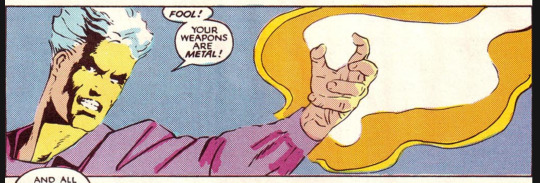
(New material presented in the form of a backflash that takes place at some point after the Uncanny X-Men (1963) #161 story which details Charles and Magneto meeting for the first time. This story suggests that these events take place shortly before Uncanny X-Men #1 when the X-Men face Magneto for the first time in 1963.)
Magneto single-handedly takes out a secret Nazi base in South America and captures Oberstrumbanführer Hans Richter to be taken back to Israel and put on trial.
After using his powers, Magneto suffers from debilitating psychic pain “Worse than the bite of the kapo’s whip, the murder of parents and family. The death of a child. The loss of a beloved wife. It passes quickly leaving him alive – and almost wishing he wasn’t.” Magneto observes that “These seizures strike now whenever I use my powers. More extreme my usage, more debilitating the attack.”
Magneto reports of the captured Nazi to a group called only “Control” (This seems to be a stand in for a Mossod style organization.)
Two weeks later, in Rio de Janiero, Magneto reads an article about Charles Xavier and wonders if he shouldn’t reconnect with him and seek help for his psychic attacks.
A woman in a bikini and sarong approaches Magneto asking why he’s dressed so formally in a suit and tie at a beach front cafe. Magneto replies “This, I’m afraid, is as uninhibited as I get.”
The woman turns out to be Magneto’s lover Isabelle, no last name is given.
Magneto recounts to Isabelle about how Anya died and Magda left him.
Control did not want Richter captured as he was a useful informant, so they send a squad to kill Isabelle and Magneto. They succeed in slaying Isabelle, but Magneto uses his powers to fight against them.
Magneto looks on Isabelle’s body completely disillusioned with humanity. The reader is told that “the dream dies… and the nightmare is born.”
June
New Mutants (1983) #64 “Instant Replay!” by Louise Simonson
Magneto is disgusted with himself after being forced to lie about the circumstances of Cypher’s death. He tells the New Mutants “It’s wrong. His parents have the right to know the truth about their son… about the way he died. But I feel that it would be dangerous to reveal ourselves as mutants at this time.”
August
New Mutants (1983) #66 “Sorcerer’s Duel!” by Louise Simonson
Magneto is seen in his old purple and red villain costume for the first time since Uncanny X-Men #188 and Marvel Super Heroes Secret Wars #12. This seems to be the start of Magneto’s corporate mandated pivot back to being an antagonist.
November
New Mutants (1983) #69 “Bad Company” by Louise Simonson
Magneto, dressed once more in his traditional red and purple outfit, holds his helmet in his hands as he says “All I have ever wanted for mutantkind is peace and prosperity. I thought I had found a better way to achieve my goal… and eschewed my old, violent ways. I had hoped to find solace as teacher and protector of the young. But they refuse to be safeguarded, if they are on Earth, I will find them… and protect them actively in the way that I know best.” Magneto puts his helmet on.
1989
April
New Mutants (1983) #74 “The Right Stuff” by Louise Simonson
Shaw blames Magneto for damages to New York City caused by Magick’s (Illyana Rasputin) Limbo demons.
Magneto and Sebastian Shaw fight each other briefly, Magneto accuses Shaw of not caring for mutantkind.
Later, Magneto talks to Emma and suggests that Shaw was right to blame him.
May
New Mutants (1983) #75 “King of the Hill!” by Louise Simonson
Magneto fights with Shaw for control of the Hellfire Club.
Magneto comes out of the confrontation victorious and Shaw is expelled from the club.
Magneto and the New Mutants have a falling out and the New Mutants refuse to have anything more to do with him.

November
Uncanny X-Men (1963) #253 “Storm Warnings” by Chris Claremont
Magneto and Moira quarrel on Muir Island about him parting ways with the X-Men, the New Mutants and the Xavier Institute.
Magneto is convinced “There is a war coming, Moira. And you are a fool if you do not see it. We mutants cannot be wished away, we are here on this earth, more and more born every day. There are those who will accept us, and those who fear us and seek our destruction. And, worst of all, those like Genoshans… who desire to exploit us for their own power and profit. We must be strong enough – as a people – to survive without the sufferance of the one or the aggression of the others. I mean to ensure that. I must – because there is no one else.”
Magneto tells Banshee “I am sorry things have to end like this – but I suspect it’s for the best. Some roads are better traveled alone.”
Magneto leaves.
1990
October
Uncanny X-Men (1963) #269 “Rogue Redux” by Chris Claremont
Magneto intervenes to save Rogue’s life after she is reborn from another dimension without her mutant abilities. He attempts to return her to her previous strength and powers in his base in the Savage Lands.
1991
February
Uncanny X-Men (1963) #273 “Too Many Mutants” by Chris Claremont
Jean tells Storm that she’s concerned Magneto is returning to his old ways.
March
Uncanny X-Men (1963) #274 “Crossroads” by Chris Claremont
Magneto narrates this issue: “All my life, I have been drawn to the wild and desolate places of the world. As a boy, I saw myself walking where no man ever had. Alone against the elements. The more I came to know of people… the more strongly that yearning dream spoke to me. As the fierce, unyielding emptiness without struck some resonant echo within my heart and soul. Yet for all of that… for all of life replete with it’s share and far more of rage and pain and suffering, as harshly given as endured… still I manage to find myself with allies. Who appear determined to stand by me, regardless. I wonder which are the greater fools: they for trying and trusting, or me for allowing it.”
Magneto is working with Ka-Zar and a depowered Rogue in the Savage Lands against the evil Zaladane.
When Rogue fights one of Zaladane’s goons, Magneto intervenes, thinking “I hear my daughter Anya scream as she burns before my eyes… hear Isabelle’s gasp of surprise as she is murdered… two I loved but were unable to save. Only avenge. It will not be that way with Rogue.”
Rogue presses Magneto to be merciful, saying “We’re the good guys, right?! We’re s’posed t’ stand for something better!” Magneto narrates “She actually believes that. Why can’t I? All I see is blood. That already spilled. That yet to be. I see my path so clearly. But I turn away.”
Magneto narrates “Later in my citadel, I reflect that ages ago – in what for me was another lifetime – I used my knowledge of genetics to mutate a band of swamp savages into super-powered beings. When they were no longer useful, I abandoned them to their fate, forgot their very existence. More of my past come back to haunt my present and threaten the future.” and in regards to his past as leader of the Brotherhood of Evil Mutants “It is a goal I once had, in those long-gone days of madness, when I was reviled and condemned as a super-villain” and then later “My life’s ambition has been to safeguard my fellow mutants. Zaladane has no such compunction. And I hear the echo of Der Führer’s voice in the radio of memory, smell the awful stench of the sick and dying as the cattle cars brought the condemned to Auschwitz. I wear red, the color of blood, in tribute to their lost lives. And the harder I try to cast it aside, to find a gentler path… the more irresistibly I’m drawn back. I should have died myself, with those I loved. Instead, I carted the bodies by the hundred by the thousands… from the death house to the crematorium… and the ashes to the burial ground. Asking now what I could not then – why was I spared?! To bring others the death that passed me by?”
Magneto narrates on Zaladane “The more I come to know of her… the more I find myself trapped in a mirror… staring at a distorted vision of myself. Sleep is a mistake. But I’m so weary this once I can’t resist. Any more than I can hold at bay… the nightmares that come along. Flowers. Scent of growing things. Joyful sounds of life. So clear. So crisp, after more than half a century. Someone sobs. My sister holds tight my hand. My father still cannot believe this is happening. I hear laughter. The guns blaze, and I’m falling with the others. Into darkness. Loamy earth smell tainted by the acrid burning of lime. All of us pressed so tight together, embracing eternity. So easy to give up. Lie in my grave. Breathe my last. But I fight!” (This recounts the events around Magneto's family's death depicted in The New Mutants #49)
Rogue wakes Magneto and they share a moment before being interrupted by Ka-Zar. Magneto thinks “Am I imagining the sudden spark between us. Leaving Rogue as shaken as I? Leave well enough alone. I am pledged to another. As much as one can pledge a heart full of ghosts.”
Magneto narrates “I cannot recall a point in my life when I did not fight. Nor any longer of a time when war held the slightest horror for me.”
Magneto’s group is aided by Nick Fury’s group which includes the father of one of the Soviet sailors killed by Magneto on the submarine Leningrad. Magneto narrates “Again, a cry from the past. One father to another, in anguished grief for a slain child. At the time, my actions seemed quite appropriate. The Leningrad had fired a salvo of nuclear ballistic missiles at me, so I sank her, with all hands. Thinking of that crew not as people, but merely an object lesson: how dare they defy me, threaten me, these Russians whose countrymen let my daughter burn to death? There is too much history and hate between us. I cannot talk to these men.”

April
Uncanny X-Men (1963) #274 “The Path Not Taken” by Chris Claremont and Jim Lee
The Russian colonel guns down Magneto leading to him being captured by Zaladane. The colonel joins Zaladane. Zaladane uses a machine to try and transfer Magneto’s powers to herself. Under the influence of the machine Magneto narrates “Try as I might, I cannot stop this. And worst of all, as my life is torn from me, turned into a sideshow entertainment for the Brainchild’s sadistic pleasure… with my strength devoted wholly to that struggle, I have nothing left to block my emotional responses to the memories themselves. Once more, I hear myself howl ‘til my voice shatters at the sight of my daughter, Anya, burning to death before my eyes. Once more, hot blood mixes with salt tears as my beloved Isabelle’s throat is cut by those I thought my trusted friends. Once more, rage flashes through me… hand in hand with a terror I’d not felt since Auschwitz… as at last I confront the Shadow King. Followed by sick shame at the awful cost of my survival.”
Zaladane leaves Magneto with her minions. Rogue and her team have infiltrated Zaladanes stronghold and once Magneto realizes they are there, he strikes the minions unexpectedly. Magneto narrates “They think me beaten, finished. A mistake many have made in the past. As I found the strength, as a boy, to survive being machine gunned and buried alive, and later the unimaginable horror of Auschwitz… so do I find it in me, here and now, to break free.”
Magneto narrates “The primal, paramount lesson of my life is that I can depend on no one save myself.”
Magneto fights against the Russian colonel saying “I am sorry for your son, colonel. Which is more than I ever heard… for the slaughter of those I loved.” Colonel Semyanov says “Your… daughter you mean? And that absolves you of any crime?” Magneto replies “I never said it did. For who we are, and what we have done, comrade colonel… we are both of us condemned.”
Rogue and Magneto argue over how he intends to deal with Zaladane. Magneto says “The New Mutants were left in my charge and they suffered for it – because I tried to pattern myself after Charles Xavier. I am not Charles Xavier. I will never be Charles Xavier. I was a fool to try. As he was, for believing I could succeed. My people are in danger – more so now than ever before – from the Hellfire Club and their accursed Shadow Kind, from foul creatures such as this, perhaps even from the very United Nations which Colonel Fury loyally serves. And a kinder, gentler Magneto cannot save them.”
October
X-Men (1991) #1 “Rubicon” by Chris Claremont and Jim Lee
Magneto has established a mutant haven on a new Asteroid M. World governments are wary of it and the X-Men are dispatched to discover what’s going on.
Magneto raises the submarine Leningrad (which he sank in Uncanny X-Men #150) from the sea floor. He finds some of the nuclear missiles the submarine was carrying are intact.
Inside the submarine, Magneto finds himself sitting among the bones of the Leningrad’s crew. “Now though, at last, he finds himself face to face with the consequence of his acts. And he remembers another time, other bodies, bones still coated with the flesh of family and friends, tossed into a lime-soaked pit and him along with them, only he was still alive. Somehow, he clawed his way to the surface.” (This again refers to the account of Magneto's family's death in The New Mutants #49)
Rogue tells Magneto that his actions are scaring people. Magneto says “I tried my best to change, I did my best to follow Xavier’s path to a peaceful co-existence between Homo Sapiens and Homo Sapiens Superior. And paid for that folly with the blood of innocents.”
Later on Asteroid M, Magneto ruminates on his latest conflict with the X-Men thinking of Wolverine in particular “For the brief time I worked with the X-Men, he accepted me wholeheartedly. If not as a friend, then at least as a comrade-in-arms. Why then has he turned on me? What has changed? Why must blood always come between me and others?” (Magneto has been working with the X-Men and the New Mutants since 1985)
Radical mutant acolytes that have decided to follow Magneto, led by Fabian Cortez, fight with the X-Men. Magneto puts a stop to it and says “All my life, I have seen people slaughtered wholesale for no more reason than the deity they worshipped, or the color of their skin – or the presence in their DNA of an extra, special gene. I cannot change the world but I can – and will – ensure that my race will never again suffer for its fear and prejudice. Henceforth, I declare Asteroid M a sovereign world. Home and haven to mutantkind. If you are born Homo Sapiens Superior, then you are automatically a citizen, entitled to safe haven above and security below. Even you X-Men – even your mentor, my old friend, Charles Xavier – are welcome here. But mark this and mark it well – harm done against any mutant is harm done to me. And I shall respond accordingly.”
November
X-Men (1991) #2 “Firestorm” by Chris Claremont and Jim Lee
Beast says that the Genoshans are changing for the better, and asks why Magneto is going in the opposite direction. Magneto says “You know that answer, Beast… you would have to live my life. And I would not wish such a fate, even on my most hated enemy.”
Magneto abducts Charles and Moira looking for answers about his genetic structure. Moira admits that she saw there was a genetic instability in Magneto’s genetic matrix, and she tried to stabilize it when he was an infant in her care.
Magneto is infuriated that Moira conducted genetic experimentation on him in an attempt to change who he was. He questions every decision he’s made since his rebirth.
Moira is apologetic, but Magneto’s anger is unabated. He tells her “I heard those same rationales as a boy, in the Auschwitz death camp, from Dr. Josef Mengele himself!”
December
X-Men (1991) #3 “Fallout” by Chris Claremont and Jim Lee
Moira reveals that the genetic experimentation she did on baby Magneto didn’t work.
Moira also points out that Cortez has been using his power to weaken Magneto.
Cortex flees Asteroid M and fires a shot at the complex that will kill all the inhabitants.
Charles and the X-Men prepare to leave in their spacecraft, but Magneto refuses to leave with them instead choosing to stay on the asteroid to preserve its integrity as long as possible using his powers. He tells Charles “My life was shaped by forces and events none of you can possibly understand. You speak to the best of humanity. I have endured the worst. You imagine the reality of the Holocaust, of the Nazi death camps. I grew up in one. Perhaps, as you say, I am tainted by blood and rage – and death. But perhaps as well, that blood and rage and death comprise the armor that will sustain me and those who stand by me through the ordeal to come. The past is prologue, old friend. And the future I behold for you is… war. We have already chosen our path.”
Asteroid M blows up just as the X-Men escape. Charles tells them all “At the last… he opened his thoughts to me. He is still the man I remember from younger, happier days – who was my friend – and yet… none of that matters anymore, does it? ‘I save you, X-Men,’ he said, ‘because that is my task in life: to safeguard my people – Homo Sapiens Superior – mutantkind – from those who would do us harm. And those forces are legion. In that and I suspect nothing else, Charles, we are much alike. I have survived one Holocaust, I could not tolerate another. Nor any who – by accident, by intent – act to bring it about. I bore no animus to you, old friend, or your students until you chose to oppose me. Then, I had no choice but to count you among my enemies. Have no illusions on that score. Perhaps it’s best it end this way, Charles. Best for my dream to end in flames and glory, here far above Earth… for if we were ever to meet again… I would have shown you no mercy. I give you your dream, Charles. But I fear, in time, your heart will break as you realize it has ever been a fool’s hope. Farewell, my friend.”
Chris Claremont was removed from the X-Men without explanation and left Marvel after this book. He had been writing for the X-Men for 17 years. To learn more about Chris Claremont and his work on the X-Men and the corporate fuckery that lead to him leaving watch the 2018 documentary Chris Claremont’s X-Men which is currently available free on YouTube.
If you feel like I’ve overlooked or left out an important issue from the 1963-1991 era, please contact me and let me know. I will update this list with more information if any comes to light.
#X-Men#xmen#Magneto#Erik Lehnsherr#Magneto/Magnus#New Mutants#Comics#Chris Claremont#Magda and Anya#Pietro Maximoff#Wanda Maximoff#The Scarlet Witch#Quicksilver#Charles Xavier#Professor X#Holocaust#Auschwitz#Jewish#Jewish Characters#70s#80s#90s#Bronze Age Comics#World War II#World War 2#WWII#Long Post#10k Words#Max Eisenhardt
115 notes
·
View notes
Text
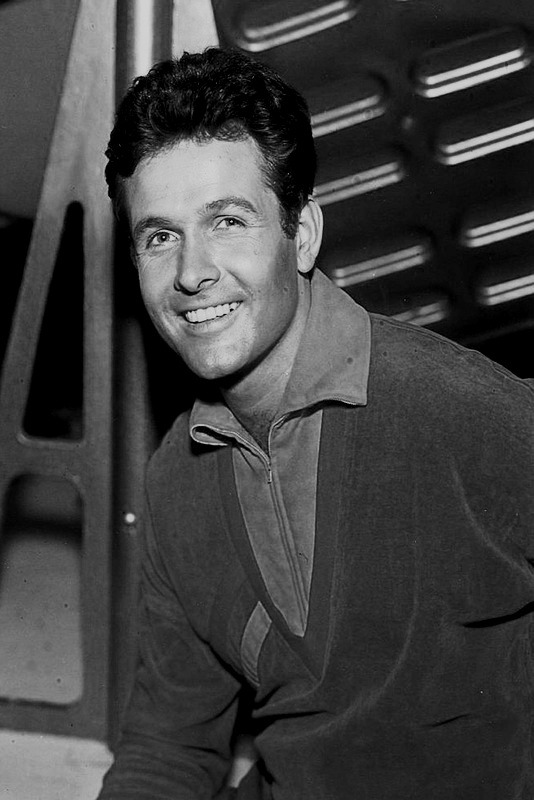
Mark Goddard (born Charles Harvey Goddard; July 24, 1936 – October 10, 2023) Film and television actor who starred in a number of television programs. He is probably best known for portraying Major Don West in the CBS series Lost in Space (1965–1968). He also played Detective Sgt. Chris Ballard, in The Detectives, starring Robert Taylor.
In 1959, after just three weeks in Hollywood, he landed a role in the CBS Four Star Television series Johnny Ringo, having played the character of Cully, the deputy to Don Durant's character of Ringo. At this time, he changed his name to Mark Goddard at the suggestion of his friend and mentor Chuck Connors of The Rifleman. Goddard appeared as Norman Tabor in the 1960 episode "Surprise Party" of the CBS anthology series The DuPont Show with June Allyson. He was cast as Sheldon Hollingsworth in the 1960 episode "To See the Elephant" of the ABC Western series The Rebel, starring Nick Adams. He played Tod Rowland in the 1960 episode "The Mormons" on Dick Powell's Zane Grey Theatre. Goddard also appeared in The Rifleman as Marty Blair in 1962 in the episode “Mark’s Rifle.”
The Detectives, another production of Four Star Television, was a hit series which ran on ABC and NBC from 1958 to 1961; Goddard was signed for a role lasting three years (64 episodes). In 1963, Goddard appeared as Roy Mooney on the Perry Mason episode "The Case of the Potted Planter". In 1964 Goddard appeared as Richard on The Virginian in the episode titled "The Secret of Brynmar Hall." That same year he guest starred as a wild killer named “Boyd” in the episode “Journey For Three” on the TV Western series Gunsmoke (S9E36).
Goddard's next role was Major Don West on Lost in Space (1965–1968). A blossoming romance initially existed between West and Judy, the elder daughter of the Robinson family, but by the middle of the second season, West maintained an adversarial relationship with the hapless, sociopathic Dr. Zachary Smith
Goddard guest-starred on three ABC series, The Fugitive, The Mod Squad, and The Fall Guy and for a while, moonlighted as a Hollywood agent. In 1970, Goddard co-starred with Kent McCord and Martin Milner in an episode of Adam-12, in which he plays a friend of Pete Malloy (Milner), who is killed in the line of duty. The episode was titled "Elegy for a Pig" (so titled and announced by Jack Webb himself). Mark Goddard also played Ellie May's beau on the Beverly Hillbillies. Goddard played a supporting role in a 1974 episode ("Dark Legacy") of CBS's Barnaby Jones.
In 1979, Goddard starred as Ted Clayton on One Life to Live and as Lt. Paul Reed on The Doctors. Later, he starred as Derek Barrington on General Hospital. (Wikipedia)
IMDb Listing
29 notes
·
View notes
Text










Happy Birthday the beautiful Scottish actress Julie Graham.
You must agree she is, and the bonnie lass has just caught up with me, we were both born in 1965, probably the only thing we have in common!
At home, Julie is an instantly recognisable face on our screens, Graham’s early years were spent with her mum Betty, who raised her alone in Irvine, Ayrshire, after her husband left when Julie was little. When Julie was eight Betty married again, to writer and broadcaster David Webster, but Betty succumbed to lung cancer when her daughter was in her late teens.
Her mother’s death, Julie says, spurred her to try and make the most of her life and she moved to London determined to become an actress. Before getting into acting, however, she worked in a law office and as a receptionist at a strip club - something she describes as “my first acting job”.
Her extensive TV credits include Taggart, Bonekickers, Survivors and The Bill. She’s also appeared in comedy movie Nuns On The Run, Some Voices, opposite Daniel Craig, and the romantic drama With Or Without You. While working on William And Mary she fell for her London-born co-star Joseph Bennet. The pair, who were married in 2002 and lived in Brighton in a formerly derelict Victorian house they renovated together from scratch. Sadly her husband took his own life in 2015.
In 2016 Julie joined the cast of Benidorm as the mother of new family, the Dawsons. She has also starred in the very successful Shetland, as Procurator Fiscal Rhona Kelly
Julie appeared in 2017 in brilliant, One of Us, set in the Highlands in the remote fictional village of Braeston. It was released internationally as a Netflix Original titled Retribution. The series received the highest number of nominations for any television production at the 2017 Scottish Royal Television Society Awards.
Since then she has turned up in Dr Who, the mini series Dun Breedin' about the taboo subject that is the menopause. The comedy-drama Queens of Mystery, all three scoring over 7/10 on my go to Movie and TV site Imdb. Julie was also on our screens in the drama Maternal about three doctors returning to post-pandemic frontline medicine after maternity leave.
Of late she has made guest appearances on two popular shows. Midsomer Murders and Silent Witnesss as well as the Edinburgh thriller series Payback with Peter Mullen Derek Riddell and Morvern Christie. Julie is lined up to star in The Hardacres an upcoming British period drama television series for Channel 5.
6 notes
·
View notes
Text

14th April 1965
I return the script of "The Lair of Zarbi Supremo". This is all right apart from line 5, page 11, which begins "My name is Dr. Who ...". This is not correct; the Doctor does not know his own name and is thus only referred to as "Dr. Who".
—Donald Wilson (Head of Serials, Drama, Television)
Donald Wilson had access to Doctor Who lore we can only dream of.
6 notes
·
View notes
Text


WILLIAM RUSSELL (1924-Died June 3rd 2024,at 99).English actor.He first achieved prominence in the title role of the television series The Adventures of Sir Lancelot (1956–1957). In 1963, he was in the original lead cast of BBC1's Doctor Who, playing the role of schoolteacher Ian Chesterton from the show's first episode until 1965.
Russell's film roles include parts in The Man Who Never Was (1956), The Great Escape (1963) and Superman (1978). On television, he appeared as Ted Sullivan in Coronation Street in 1992. In his later years, he continued his association with Doctor Who and returned as Ian for a 2022 cameo in "The Power of the Doctor", 57 years after the character left, which won him a Guinness World Record for the longest gap between TV appearances.William Russell (English actor) - Wikipedia
#William Russell#English Actors#British Actors#Actors#Doctor Who#Notable Deaths in June 2024#Notable Deaths in 2024
5 notes
·
View notes
Photo

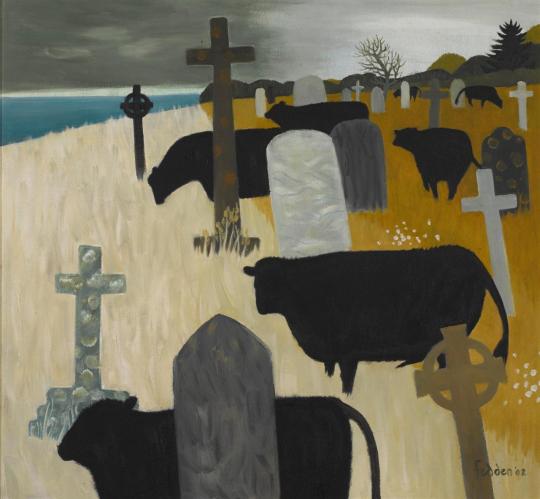





Mary Fedden, artist, was born in 1915 in Bristol. She studied at the Slade School of Art in London from 1932 to 1936 under the theatre designer Vladimir Polunin, who had worked with the Ballets Russes. She painted sets for professional performances at Sadlers Wells, but decided against stage design as a career. Returning to Bristol, she taught art and made a living by painting portraits. During the war she served in the Land Army and the Woman’s Voluntary Service, and on settling in London she worked as a stage painter for the Arts Theatre in Great Newport Street and produced propaganda murals. In 1944 she was called up, and sent abroad as a driver for the Navy, Army and Air Force Institutes (NAAFI).
After the war she returned to painting and in 1947 held her first exhibition of still life and flower paintings at the Mansard Gallery in Heal’s Department Store. She was subsequently commissioned to paint covers for Woman magazine. In 1949 she moved to Durham Wharf, a complex of studios on the Thames at Chiswick, where she still lives and works.
MARRIAGE AND DEVELOPING AS AN ARTIST
In 1951 she married the artist Julian Trevelyan (1910 – 1988), whom she had met before the war. Together they worked on a series of murals for the Television pavilion at the Festival of Britain in 1951, the P & O Liner Canberra in 1961, Charing Cross Hospital in 1980 and and Colindale Hospital in 1985. They travelled widely together throughout Europe, Africa, India, Russia and America.
From 1946 Fedden had regular exhibitions at the Redfern Gallery, the New Grafton Gallery and many other galleries throughout Britain. In 1958 she was the first woman tutor to teach in the Painting School at the Royal College of Art. At this time David Hockney, Patrick Caulfield, Allen Jones and RB Kitaj were studying there. It is not difficult to see signs of Mary Fedden’s influence in all of them. She subsequently taught at the Yehudi Menuhin School from 1965 to 1970.
In 1992 she was elected a Royal Academician in the Senior Order and she has been a member of the Royal West of England Academy at Bristol since the mid-1930s. She received an OBE and a Doctor of Literature, Bath University in the 1990s.
Mary died in London on 22nd June, 2012.
https://maryfedden.co.uk/
30 notes
·
View notes
Text
Doctor Who at 60: the show has always tapped into political issues – but never more so than in the 1970s
by Jamie Medhurst, Professor of Film and Media at Aberystwyth University
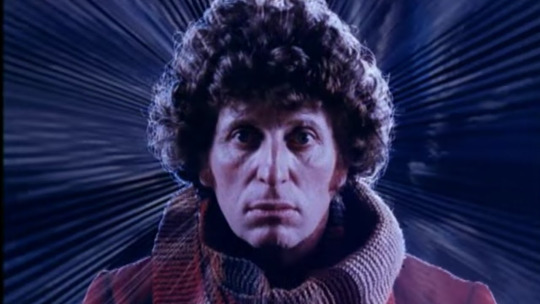
Doctor Who hit television screens at a key period in British television history. It launched on Saturday November 23, 1963, at 5.15pm, being somewhat overshadowed by the assassination of US president John F. Kennedy the previous day.
Set firmly within the BBC’s public service broadcasting ethos of informing, educating and entertaining, Doctor Who quickly became a mainstay of Saturday-evening viewing. By 1965, it was drawing in around 10 million viewers.
Throughout its history, Doctor Who has tapped into political, social and moral issues of the day – sometimes explicitly, other times more subtly. During the 1970s, when the Doctor was played by Jon Pertwee and Tom Baker, there were a number of examples of this.
Doctor Who in the 1970s
The 1970s were a period of political and social divisions: relationships between the government the unions in the first part of the decade was strained, exemplified by the miners’ strikes of 1972 and 1974. The political consensus that had dominated since 1945 was under pressure with talk of a break-up of the UK in the form of Welsh and Scottish Assemblies.
In his cultural history of Doctor Who, Inside the Tardis, television historian James Chapman argued that the 1970s painted “an uncomfortably sinister projection of the sort of society that Britain might come”.
It was never clear if Doctor Who storylines during this time were set in the present or at some point in the future. The fact that one of the lead characters, Brigadier Lethbridge-Stewart of the United Nations Intelligence Task Force (UNIT), calls the prime minister “Madam” in a telephone conversation in one episode suggests the latter.
youtube
As for some of the more politically engaged stories, The Green Death (1973), or “the one with the giant maggots” as it is known by fans, certainly pulled no punches. Described by Chapman as an “eco disaster narrative”, it pitted corporate greed and capitalism against environmental activists (portrayed here as Welsh hippies) and their concerns for the planet.
In the episode, Global Chemicals, run by a faceless machine, is tipping waste from its petrochemical plant into a disused mine in the south Wales valleys (cue awful Welsh stereotypes). The green sludge not only kills people, but creates mutant maggots which also attack. As fears grew and the green movement gained momentum in the early 1970s, this story would have resonated with large parts of the audience.
When the Doctor visits the planet Peladon in The Curse of Peladon (1972), the planet is attempting to join the Galactic Federation. There are those on the planet who argue for joining, while opponents are just as vociferous, arguing that joining the Federation would destroy the old ways of the planet.
Sound familiar? This is the time that Britain was negotiating to join the European Economic Community, as it did in 1973. Interestingly, the serial was broadcast during the time of the 1972 miners’ strike (leading to many viewers missing later episodes due to power cuts).
The follow-up story, The Monster of Peladon (1974), is set against a backdrop of industrial strife and conflict involving miners.
Tom Baker’s Doctor
In what many consider to be one of the best classic serials, Genesis of the Daleks (1975) Tom Baker’s doctor continued the tradition of raising complex political, social and moral issues.
youtube
Sent back in time by the Time Lords to change the course of history, the Doctor at one point has an opportunity to destroy the mutations which form the “body” of the Dalek (inside their metal casing) and destroy the Dalek race forever. Holding two wires close to each other, about to create an explosion in the incubation room, he asks himself and his companions: “Have I that right?”
Having the ability to see the future, he says that future planets will become allies in fighting the evil of the Daleks. Had he the right to change the course of history? Given the symbolism used in the story (salutes, black outfits, references to a “pure” race) this was a clear reference to the rise of the Nazis.
The political allegories didn’t end in the 1970s. One of the most blatant can be seen in the 1988 serial, The Happiness Patrol. The main antagonist, Helen A (played by Sheila Hancock), a ruthless and tyrannical leader is said to be modelled on Conservative prime minister, Margaret Thatcher. The fact that Hancock appears to be impersonating Thatcher lends a certain degree of credence to this belief.
Anybody who argues that the revival of Doctor Who in 2005 saw a more political edge to the storylines need only look back over 60 years. Now that we can do this thanks to the BBC uploading more than 800 episodes onto iPlayer, it will become clear to all.
Doctor Who – especially during its Golden Age in the 1970s – has always been political.
#science fiction#science fiction and fantasy#sci fi TV#Doctor Who#john pertwee#Tom Baker#Sci Fi Time Capsule#1970s tv#1970s sci fi#featured#Youtube
3 notes
·
View notes
Text
Edna Bonhomme
In 1994, when I was 10, my most reliable babysitter—a hexagonal television set with two antennae—introduced me to the concept of abortion. My cousins and I sat on the couch—our legs, clammy in the Miami heat, stuck to the plastic-covered furniture. There we watched the 1987 film Dirty Dancing. Even then, I understood the 1960s American class markers: the summer holiday resort, the pleasant cabins around a pristine lake, the employees serving the wealthy guests. But the scene I remember most was when Penny, a dance instructor, sat on the kitchen floor at night in tears and realized she had gotten into “trouble.”
“Trouble for what?” I wondered. My older cousins explained: Penny was pregnant, and an unplanned birth was the worst tragedy. It might have been less of a problem for the wealthy guests, but for someone like Penny, it could be life-threatening. The film is set in 1963, a decade before Roe v. Wade. Penny can’t afford to terminate the pregnancy or hold Robbie, the womanizer from Yale who impregnated her, accountable. She has to rely on the goodwill of her childhood friend and coworker, Johnny Castle, and a guest, Frances. Penny finally gets an abortion, but viewers learn that the doctor botched the procedure, and she barely survives.
The message was straightforward: Before Roe, one needed money and a sympathetic doctor to get a safe abortion. If you were poor and pregnant, you might face hardship and even death if you sought out cheaper and less experienced abortion providers. For many people, this reflected the reality. In 1965, according to Planned Parenthood, 17 percent of pregnancy-related deaths were due to unsafe abortions.
Dirty Dancing illustrated why access to safe abortions is so crucial. Penny, who is white, is a likable working-class figure. Yet the film neglected to show how working-class nonwhite women like me could access abortion. (My public education in Florida also wasn’t helpful on that score.) Penny could not get an abortion without a coterie of friends—and she wasn’t able to get a safe one.
When our parents and schools fail us, we have to rely on our personal networks and ourselves to find out what we must do to have jurisdiction over our bodies. This is why movies and books are so essential; even when the narratives are muffled or distorted, they contain lessons that circulate in our culture. And many of the most poignant stories about abortions are not on film; they’re in books—novels and short stories—that show us how we can talk about women, especially working-class women, who unapologetically end their pregnancies.
The decades preceding Roe saw a surge in abortion narratives in literature. In some cases, abortion was presented as a potentially fatal situation, as in Richard Yates’s 1961 novel Revolutionary Road, in which a woman dies after performing an abortion on herself; Mary Astor’s A Place Called Saturday from 1968, in which a male partner pressures the protagonist, Cora March, to have an abortion; and 1970’s Play It as It Lays by Joan Didion, in which an actress has an abortion that contributes to her psychiatric breakdown. Very few works portray working-class women from this period who terminate their pregnancies without regret or anguish.
There are, however, some important exceptions, including Alice Walker’s short story “The Abortion,” first published in 1980, and Annie Ernaux’s 1974 novel Les Armoires vides, or Cleaned Out—both of which take place before abortion was legalized in their authors’ countries (the United States and France, respectively), and both of which depict abortion from the point of view of women from modest backgrounds. Perhaps more crucially, Walker and Ernaux created characters whose decisions to have abortions are unclouded by doubt. These stories hew closer to how most women describe their abortions. About 75 percent of people who end their pregnancies are low-income. And when researchers studied the mental health and well-being of women who have had abortions, they found that 95 percent believed that they had made the right decision.
Writing the abortion stories of working-class women with tenderness and exacting honesty, as Walker and Ernaux do, is essential to the reproductive rights movement. It helps paint realistic portraits of people who seek abortions, thwarting right-wing stereotypes and teaching readers the liberatory possibilities of making one’s own reproductive choices.
In “The Abortion,” Alice Walker applies her formidable prose to the story of an African American woman seeking to terminate her pregnancy. It appears in her collection You Can’t Keep a Good Woman Down, a reference to a Mamie Smith and Perry Bradford song. The book, a meditation on the trials and tribulations of Black women, explores love, culture, fame, and despair. “The Abortion” focuses on Imani, a young Black mother living in the South who is depressed and fatigued by marriage, motherhood, and pregnancy.
Facing an unwanted pregnancy, Imani lays out the toll of having and raising a Black child in America. Much of the story is devoted to what gestation does to the body: “Imani felt her body had been assaulted by these events and was, in fact, considerably weakened, and was also, in any case, chronically anemic and run down.” Imani already has a toddler and feels that being a parent is interfering with the life she wants to lead. “Another child would kill me,” she says. “I can’t imagine life with two kids.” So she discusses terminating the pregnancy with her husband, a lawyer named Clarence.
In the story, Imani has two abortions—one before her marriage and the other after she had her child, a daughter. Her first abortion was a clandestine procedure that cost a “thousand dollars, for which she would be in debt for years” and after which she hemorrhaged for weeks, while her second abortion was “seventy-five dollars…safe, quick, painless.” The story, which is clearly set before Roe, reflects the shifting legal landscape. Although abortion remained technically illegal in New York State, it was decriminalized in 1970 by the state Legislature. The result is that Imani’s second abortion is a relatively pedestrian event—a safe, standardized medical procedure.
“The Abortion” isn’t just an abortion story; it’s about the lives and deaths of working-class African Americans. It details Black subjugation at the height of civil unrest—in this case, on the fifth anniversary of the death of Holly Monroe, a fictional African American girl who was murdered after attending her high school graduation. Walker writes that Monroe was “aborted on the eve of becoming herself.” For Imani—and for contemporary readers—Monroe’s death is a gutting reminder that Black children’s lives can be cut short. Monroe’s memorial makes Imani realize that raising another Black child would only increase the probability of her having to mourn the untimely death of one of her own kids.
Walker’s story echoes her own life. Like Imani, Walker had a young daughter and a lawyer husband, and she would also have two abortions in the years before Roe. Both Walker and her character were concerned about the cruelty that society often metes out to Black people. Decades later, writing about her second abortion, Walker explained:
We knew the children being fire-hosed were innocent of anything but being children struggling for a future. We knew the beatings, car bombings, explosions, house and church burnings, and violent assassinations were intimations of a future that more and more is coming to pass. To bring anyone, especially a helpless infant, into what was clearly a destructive situation, in a world where few in power even pretended to care for children of color, seemed the very definition of madness.
What Walker shows us is that one of the major promises of motherhood is a lie: One will not necessarily be fulfilled or content just by being a parent. Imani, however, insists on holding on to truth. She tells her toddler that white people “think they can kill a continent—people, trees, buffalo—and then fly off to the moon and just forget about it. But you and me, we’re going to remember the people, the trees and the fucking buffalo.” The toddler, mimicking her mother, responds, “Buffwoe.” Here, Imani is attentive to oppressed people, animals, and nature, indicating that the decision to be a parent is not merely about physical care but about cultivating a political education. Walker’s story is a departure from a significant portion of the abortion literature precisely because it exposes the racial hierarchies of life and the power of historical memory.
Imani is unwavering in her decision. The narrator tells the reader that “their aborted child would have been a troublesome, ‘terrible’ two-year-old, a great burden on its mother, whose health was by now in excellent shape.” Parenting wears down mothers, and deciding to abort can be a decision to prioritize one’s body and political integrity.
One of the richest accounts of an abortion by a working-class woman is Annie Ernaux’s Cleaned Out. Published in 1974, it chronicles the experience of Denise Lesur, a 20-year-old French scholarship student. From the description of her body and the accounts of her village, the reader quickly recognizes in Denise a storyteller intent on protecting her future at any cost. The opening scene is striking:
I was on the table, all I would see between my legs was her grey hair and the red snake she was brandishing with a pair of forceps. It disappeared. Unbearable pain. I shouted at the old woman who was stuffing in cotton wool to keep it in place. Shouldn’t touch yourself down there, it’ll get damaged.
The “snake” inserted into Denise is a tube, which she has to keep inside her all day to terminate the gestation. The whole time, her body is wracked by spasms of horrific pain, a constant reminder that she has just had “a backstreet abortion.” A poetic sensibility pervades the book, with Ernaux tracing Denise’s sensory journey: “My head pressed into the smell of the blanket, the sun beating down on me from my waist to my knees, a warm tide inside me, not a wrinkle visible, everything is taking place in folds and crevices miles below the surface.”
As in Walker’s short story, the illegal abortion is not only a secret affair but a costly one, requiring Denise to secure funds far beyond what she can afford. This is a central issue for Denise, the ambitious daughter of a storekeeper. Aspiring to enter the world of arts and letters, she is aware that class is determined by more than education—it is a sense of belonging that is alien to her. Denise feels “clumsy and awkward in comparison with the private-school girls, who are confident, who know just what to do.” Likewise, the story of her abortion is not just about the physical procedure but about the disdain she feels for her upper-class classmates as she tries to move up the class hierarchy. Her abortion becomes a way to secure her future, even if the postoperative symptoms cause her pain.
This novel, too, was based on the author’s abortion experience, and it shows how desperate working-class French women were to access the procedure before it was legalized in France in 1975. In her 2000 memoir, L’Événement (Happening), Ernaux tells the story of her pursuit of an abortion. She seeks a physician. She asks her lover for money to terminate the pregnancy, and he tries to have sex with her. She even tries to induce an abortion herself. But the story isn’t just about choice; it’s about class shame, which fuels her desire to succeed. For Ernaux, having a child at that time would have prevented her from eventually becoming a Nobel Prize–winning author.
Writing to her translator, Carol Sander, Ernaux asserts, “There is in Les Armoires vides a desire to transgress all boundaries. In its content: saying the unsayable, feeling ashamed of one’s parents, humiliated, wanting to be like everyone else; speaking about the female body, menstruation, erotic pleasure, abortion.” Like Walker, Ernaux was not stifled by the stigma of abortion; instead, the procedure was a path to liberation.
Part of the beauty of art is that we can recognize bits of ourselves in it. Like Penny in Dirty Dancing, I grew up poor and knew what it was like to rely on friends for survival. While I never saw any reason for Penny to feel chagrin for her abortion, I internalized the film’s message that an unwanted pregnancy was a life-shattering problem, especially if you were poor.
Walker and Ernaux moved past this discourse. They showed how abortion literature could render the interests of working-class women without relegating them to mere troublemakers. Their characters didn’t rely on benefactors or do as others wished; they pushed the plot forward themselves. In Walker and Ernaux’s telling, abortion is freeing. As Imani affirmed, abortion can be a “seizing of the direction of her own life.”
Today there are even more radical accounts of reproductive choices in literature. In Guadalupe Nettel’s novel Still Born, published in 2020, Laura, the protagonist, presents an unflinching desire not to have children. When she contemplated having a kid, Laura recognized her error: “Just as someone who, without ever having contemplated suicide, allows themselves to be seduced by the abyss from the top of a skyscraper, I felt the lure of pregnancy.” So, early in the text, Laura gets her tubes tied. I loved the book’s energy and comic style. Unlike the typical abortion plots that spend so much time probing a character’s troubles, Nettel’s novel offers a thrilling possibility: opting out of motherhood altogether. A profound message binds Nettel’s novel with Walker’s and Ernaux’s work: the desire to live fully.
Given the attacks on reproductive rights around the world, abortion narratives will continue to offer nuance when it comes to issues of representation and access, and now a new generation of authors, including Nettel, are building on the literary breakthroughs of Walker and Ernaux, choosing to write about women who make their own choices without apology.
2 notes
·
View notes
Text
ANN MILLER at the PALACE
May 25, 1965
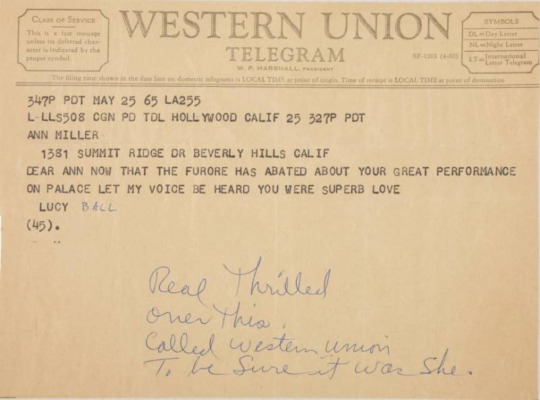
On May 25, 1965, Ann Miller received a telegram from Lucille Ball praising her performance on “The Hollywood Palace” on May 22, 1965. Miller was so surprised that she called Western Union to verify the telegram’s authenticity.

“The Hollywood Palace” was an hour-long television variety show that aired from 1964 to 1970. It was staged at the Hollywood Playhouse on Vine Street. Desi Arnaz Jr. appeared on the show with Dino, Desi & Billy in 1964 and 1968.
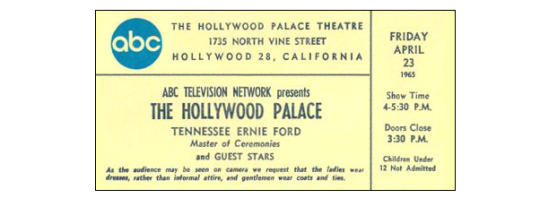
This episode was recorded on Friday, April 23, 1965.

This was Miller’s fourth appearance on the program. She performed “Trapped in a Web of Love” and “Won’t You Come Home Bill Bailey” with a leg injury, defying a doctor who told her she needed to stay in bed. She asked Bob Mackie to prepare a special set of tights that would help her dance on her injured leg.
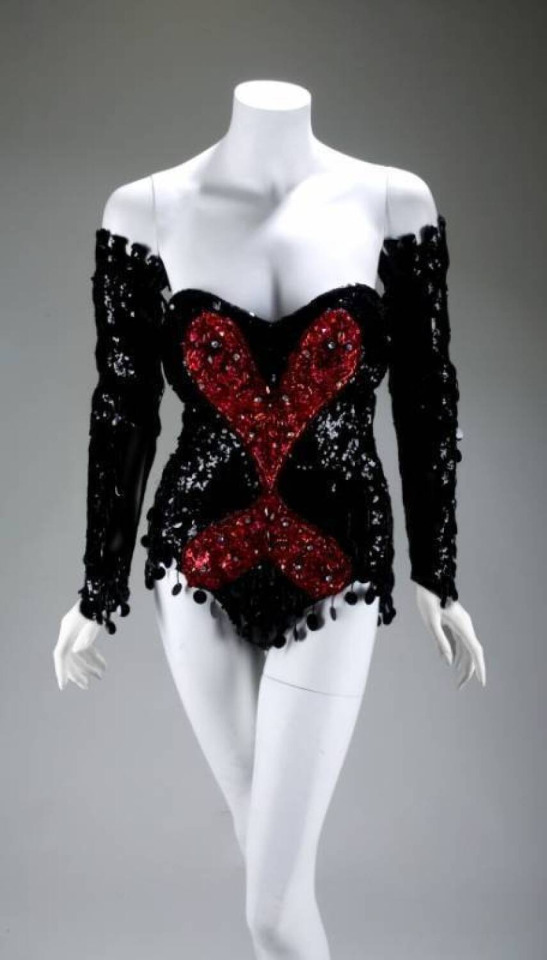
The costume was auctioned off in 2009 fetching more than $1,200.

Miller had appeared with Lucille Ball and Desi Arnaz in their 1939 film Too Many Girls.

Ball had several reasons to watch that evening’s episode of “Hollywood Palace”. In addition to Miller, the show was hosted by Tennessee Ernie Ford, who had appeared three times on “I Love Lucy” and would go on to make guest star appearances on “The Lucy Show” in 1967 and “Here’s Lucy” in 1969. In return, Ball also appeared on his television specials.

Guests included Edie Adams, who appeared on the very last episode of “The Lucy-Desi Comedy Hour” in April 1960. She went on to appear in a 1968 episode of “The Lucy Show.”
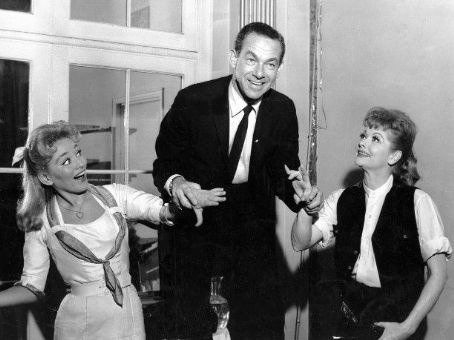
Comedian Jack Carter was the best man at Lucy’s wedding to Gary Morton in 1961. A few weeks later he married Paula Stewart, who played Lucy’s sister Janie in Broadway’s Wildcat. He acted in “Lucy Sues Mooney” (TLS S6;E12) and directed two episodes of “Here’s Lucy.”

#ann miller#Lucille Ball#Hollywood Palace#1965#Tennessee Ernie Ford#Edie Adams#Jack Carter#TV#Telegram#Bob Mackie#Paula Stewart#Eddie Bracken#Western Union
3 notes
·
View notes
Text
Elisabeth Sladen Biography, Height, Age, Family, Boyfriend and Net Worth


Elisabeth Sladen 1 February 1946 – 19 April 2011 Was an English actress. She is best known for her role as Sarah Jane Smith in the British television series Doctor Who, where she appeared as a regular cast member from 1973 to 1976 alongside Jon and Tom Baker, and later reprised the role on Doctor Who and its spin-offs, K-9 and Company (1981) and The Sarah Jane Adventures (2007-2011). Full NameElisabeth Clara Heath-SladenNet Worth$2 MillionDate Of Birth1 February 1946Age65 YearsGenderFemaleHeight5 Feet 4 Inches
Elisabeth Sladen Biography/Life Story

Elisabeth Sladen born on February 1, 1946, age 65 years old in 2011. She was born and raised in a well-established Christian family in Liverpool, United Kingdom. She is British by nationality Christianity. She finished her early education at Elliott-Clarke Drama School in Liverpool, United Kingdom. After two years at Drama School, she began working as an assistant stage manager for the Liverpool Playhouse Repertory Company. She has been more interested in acting than in studying since she was a child. Full NameElisabeth Clara Heath-SladenProfessionActress, Presenter and WriterPhysical Height Eye Color Hair Color 5 Feet 4 Inches Blue Dark BrownWeight54 KGDate Of Birth1 February 1946Age65 YearsNet Worth$2 MillionNationalityBritishHometownLiverpool, EnglandBirthplaceLiverpool, United KingdomReligionChristianHigh SchoolElliott-Clarke Drama School in Liverpool, United KingdomCollege/ UniversityMA Media and Communication graduate from the University of PortsmouthEducation QualificationGraduateZodiac SignAquariusFamous RoleSarah Jane Smith in TV Series Doctor (1973-1976)Years Active1965 – 2011Marital StatusMarriedParents Name: Father Mother Tom SladenBrother Sister----BoyfriendBrian Miller
Elisabeth Sladen Net Worth

Elisabeth Sladen total assets in 2011 was $2 million. She is best known English-British actress, presenter, and writer for her role as Sarah Jane Smith on the British television series Doctor Who, where she was a regular from 1973 to 1976. She reappeared in the 2000s with several Doctor Who appearances, culminating in a regular lead role in The Sarah Jane Adventures. In 2010, the program was nominated for the Royal Television Society Award for Best Children's Drama.
Elisabeth Sladen Height & Weight

She physical appearance 5 feet 4 inches tall and weighs around 54 kg. She has long, shiny dark brown hair as well as blistering blue eyes that are beautiful and mesmerizing.
Elisabeth Sladen Status

Elisabeth Sladen’s marital status was married. She is married to actor Brian Miller in 1968. She was a beautiful and stunning woman with an appealing and charming personality. She had a stunning and captivating body.
Elisabeth Sladen Family

She parents are Tom and Gladys Sladen. Father was Tom Sladen who fought in World War I and served as a Home Guard in World War II, and her mother was Gladys Sladen, a trainer. She has no sibling. Elisabeth Sladen Husband

Elisabeth Sladen married actor Brian Miller on June 8, 1968 in Liverpool. Sadie Miller, Sladen's daughter, appeared alongside him in the 1993 documentary Thirty Years in the TARDIS, wearing a replica of the Andy Pandy overalls he wore in The Hand of Fear.
Elisabeth Sladen Early Life

Elisabeth Sladen was born on February 1, 1946, in Liverpool, England. Sladen a First World War veteran who later served in the Home Guard during World War II, and Gladys (1902-1978). She began taking dance lessons at the age of five and performed in one Royal Ballet production. She was a primary school classmate of future politician Edwina Currie and appeared in at least one school production alongside her. She continued her education by attending Aigburth Vale High School for Girls.
Elisabeth Sladen Career/Profession

She started her career as an assistant stage manager. In the year 1965, she starred in the film titled Ferry Cross the Mersey. 1. Elisabeth Sladen cause of death?Ans. Elisabeth Sladen was diagnosed with pancreatic cancer in February 2011 and died on April 19, 2011; she had previously battled the illness in 1999. She was 65. Also Read: - Bessie Carter Biography, Height, Age, Family, Boyfriend and Net Worth - Sophie Reynolds Biography, Height, Age, Family, Boyfriend and Net Worth Read the full article
0 notes
Text

Dr. William Henry Cosby Jr. (July 12, 1937) is a stand-up comedian, actor, and author. He began his career as a stand-up comic at the Hungry I in San Francisco. He landed a starring role in the television show I Spy, followed by his sitcom The Bill Cosby Show, which ran for two seasons. Using the Fat Albert character developed during his stand-up routines, he created, produced, and hosted the animated comedy television series Fat Albert and the Cosby Kids, centering on a group of young friends growing up in an urban area. He starred in about half a dozen films, and he occasionally returned to film in his career. He earned his Doctor of Education from the University of Massachusetts Amherst. His dissertation discussed the use of Fat Albert and the Cosby Kids as a teaching tool in elementary schools.
He was born in Philadelphia. He is one of four sons of Anna Pearl (née Hite), a maid, and William Henry Cosby Sr., who served as a mess steward in the Navy.
In 1965, he broke barriers when he became the first African American to star in a weekly dramatic television series with his role as a government agent on I Spy, an action-adventure series that ran for three seasons and earned him three Emmy awards. He starred in several student films including Uptown Saturday Night (1974). He made regular appearances on the educational children’s series The Electric Company and Sesame Street which led to his critically-acclaimed cartoon series, Fat Albert and the Cosby Kids (1972-1984) and influenced his return to college to earn a BA from Temple University, and MA and Ed.D. from the University of Massachusetts.
He produced and starred in the television sitcom The Cosby Show which was rated as the number one show in America. The sitcom highlighted the experiences and growth of an affluent African-American family. He produced the spin-off sitcom A Different World. He also starred in The Cosby Mysteries and the sitcom Cosby and hosted Kids Say the Darndest Things.
He married Camille Hanks (1964). They have five children and three grandchildren. #africanhistory365 #africanexcellence #omegapsiphi
0 notes
Photo
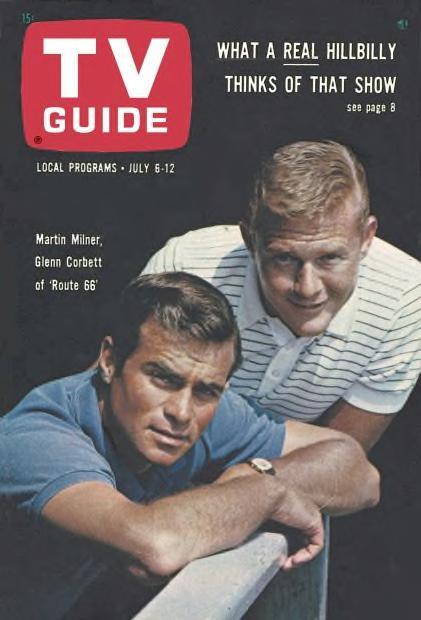
TV Guide - July 6 - 12, 1963
Martin Sam Milner (December 28, 1931 – September 6, 2015) Film, stage, radio and television actor. Milner is best known for his performances in two popular television series: Route 66, which aired on CBS from 1960 to 1964, and Adam-12, which aired on NBC from 1968 to 1975.
He guest starred in many television series during the 1950′s through the 1990′s. Among them were The Stu Erwin Show, Dragnet, The Life of Riley, Navy Log, 7 The West Point Story, Wagon Train, The Millionaire, Rawhide, The Twilight Zone, Laredo, The Virginian, Fantasy Island, MacGyver, Murder, She Wrote and Life Goes On. He also starred in The Swiss Family Robinson during the 1975-1976 season. (Wikipedia)
Glenn Corbett (born Glenn Edwin Rothenburg; August 17, 1933 – January 16, 1993) Actor in movies and television for more than thirty years. Corbett came to national attention in the early 1960s when he replaced George Maharis in the cast of the popular CBS adventure drama Route 66. He followed this with roles in high-profile films and television shows, including a guest role in the original Star Trek series, the daytime soap opera The Doctors and the prime-time soap Dallas.
In 1963, Corbett replaced George Maharis on Route 66. Corbett, playing Lincoln Case, co-starred with Martin Milner during part of the third season and the fourth and final season of the series (1963–64). In 1964–65, he had a role on Twelve O'Clock High as Lt. Tom Lockridge for two episodes.
Corbett's other television roles in the early to late 1960s include Wes Macauley on It's a Man's World (1962–63). He was featured in 1964 as "Dan Collins" in an episode of Gunsmoke titled "Chicken" in which a man gets an undeserved reputation as a gunman when he is found at a way station with four dead outlaws at his feet. Corbett was cast in a 1965 episode of Bonanza, titled Mighty is The Word, in which he portrayed a gunfighter who finds religion and becomes a preacher, only to be confronted by a vengeful man whose brother he once killed. In the 1965–1966 season, Corbett guest-starred on The Legend of Jesse James. Corbett also guest-starred in an episode of The Virginian, entitled "The Awakening", in which his character, David Henderson, is a destitute former minister who has had a crisis of faith and comes to Medicine Bow just as a dispute breaks out at a local mine over safety issues. He appeared as "Chance Reynolds", a regular cast member on The Road West (1966–67). He guest-starred in the second season Star Trek episode "Metamorphosis" (1967) as Zefram Cochrane.
In 1971, Corbett had a guest appearance with Mariette Hartley on Gunsmoke (episode: "Phoenix"). In the 1970s, he had guest-starring roles on the television shows The Mod Squad, Cannon, The Streets of San Francisco, Police Woman, The Rockford Files, and Barnaby Jones.
In 1976, Corbett joined the cast of the NBC daytime soap opera The Doctors as Jason Aldrich. He stayed on The Doctors until 1981. Throughout the 1980s, Corbett was a recurring guest star on the long-running television series Dallas as Paul Morgan from 1983–84, and then from 1986–88. (Wikipedia)
37 notes
·
View notes
Text
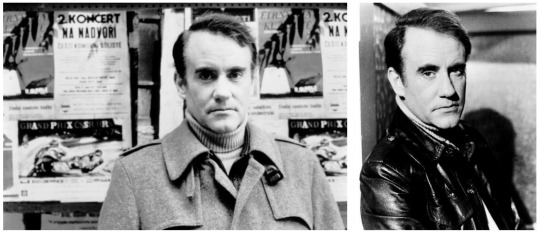
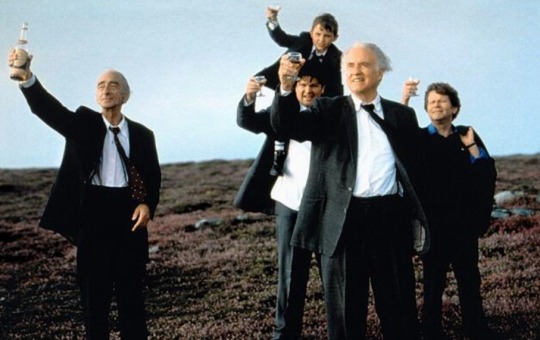
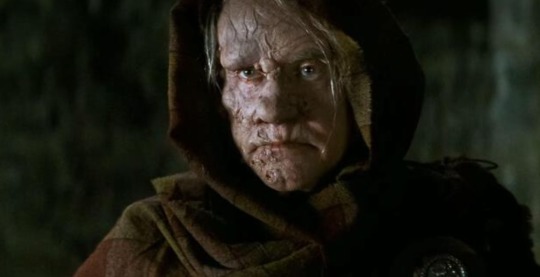


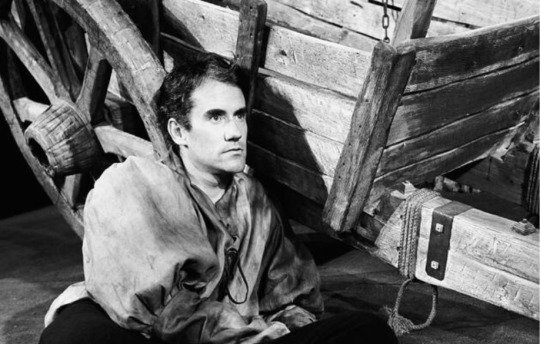
The actor Ian Bannen was born in Airdrie, Lanarkshire, on June 29th,1928.
Ian Edmund was one of our best known actors and was a prolific performer on stage and screen. He appeared in more than 70 films in a movie career which began in the 1950s.
But Ian was equally renowned for his stage and television performances and gained a reputation as a versatile actor, often overshadowing those in the leading role.
Ian attended St Aloysius’ College, Glasgow and then Ratcliffe College, Leicester before serving in the army. After a spell as a photographer he got into acting, his first known role was in a play in Dublin. He became a successful figure on the London stage, making a name for himself in the plays of Shakespeare, he was one of the founding members of the RSC.
The young Bannen, who was soon to become a household name himself, appeared with notables such as Vanessa Redgrave in As You Like It and in Othello with Sir John Gielgud.
His film career began with movies including Private’s Progress and A Tale of Two Cities, and he was nominated for an Oscar for his supporting role in the Flight of the Phoenix in 1965, alongside James Stewart.
His film appearances read like a list of some of the most notable post-war films.He won a Bafta award for best actor in Sidney Lumet’s The Offence, a tense thriller in which fellow Scot Sean Connery also starred.
Ian appeared in John Huston’s The Mackintosh Man, opposite Paul Newman; The Driver’s Seat, in which he co-starred with Elizabeth Taylor and The Voyage, with Sophia Loren.
Bannen was consistently sought for major film productions and performed in Richard Attenborough’s Gandhi, Gorky Park, John Boorman’s Hope & Glory and of course Braveheart as The Bruce’s father.
Television appearances included parts in “Tinker, Tailor, Soldier, Spy” and “Doctor Finlay”, for which he won the viewers’ affection in his role as Dr Cameron.
Bannen was killed, aged 71, in a car accident near Loch Ness in 1999. He and his wife, Marilyn, who had been driving, were discovered in an overturned vehicle in Knockies Straight between Inverness and Fort Augustus, Marilyn escaped with only minor injuries. The couple had been married since 1978, he is buried at Kilchuiman Burial Ground, Fort Augustus.
33 notes
·
View notes